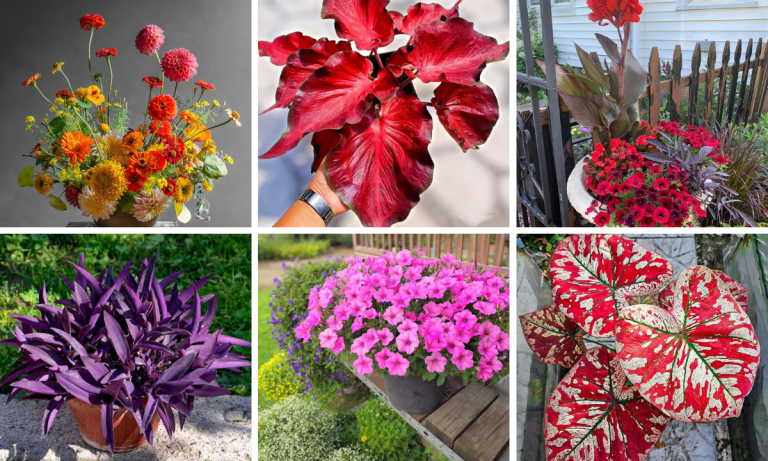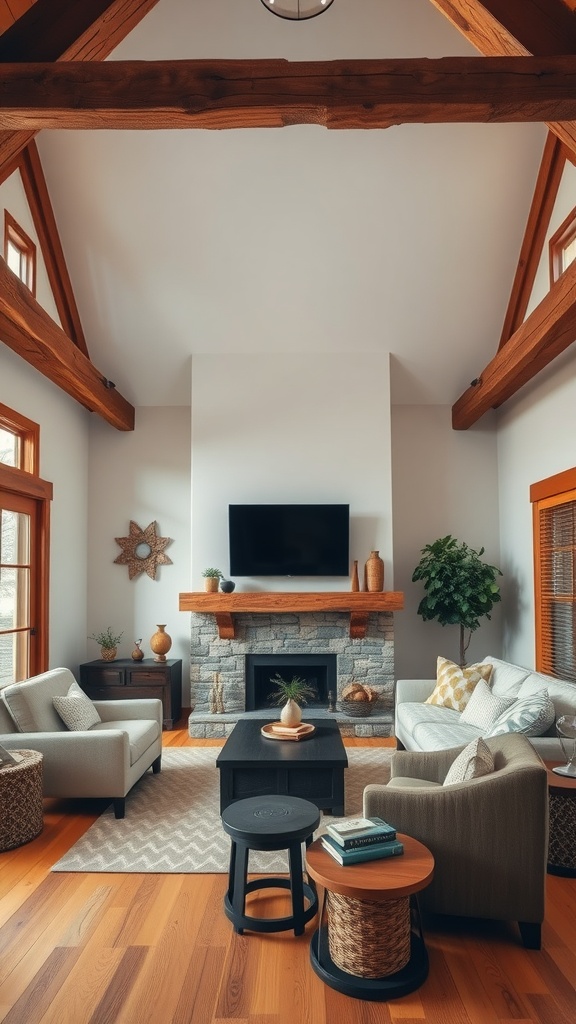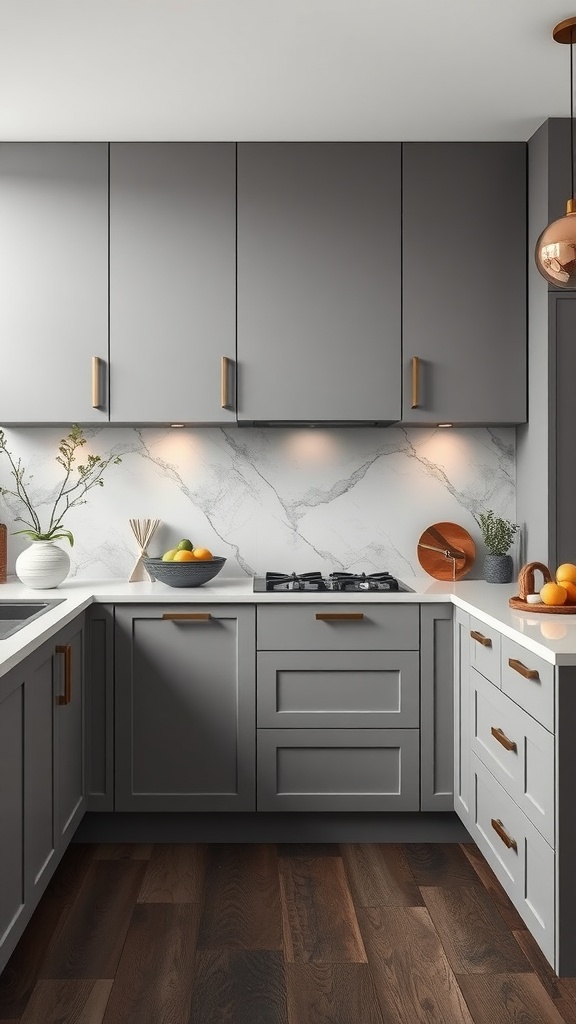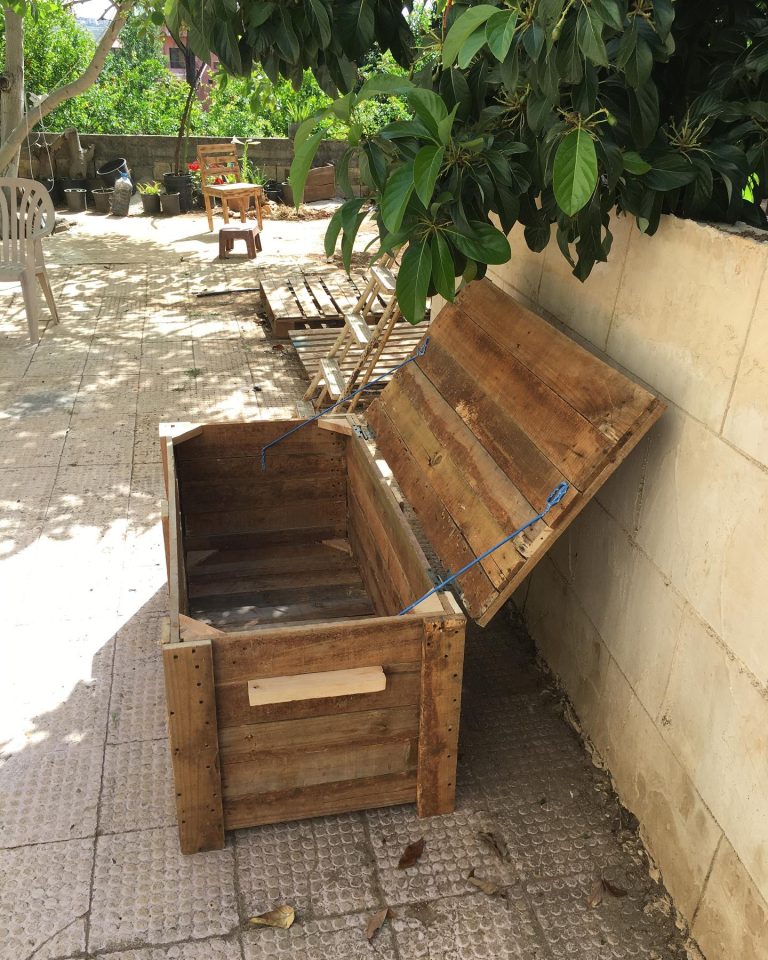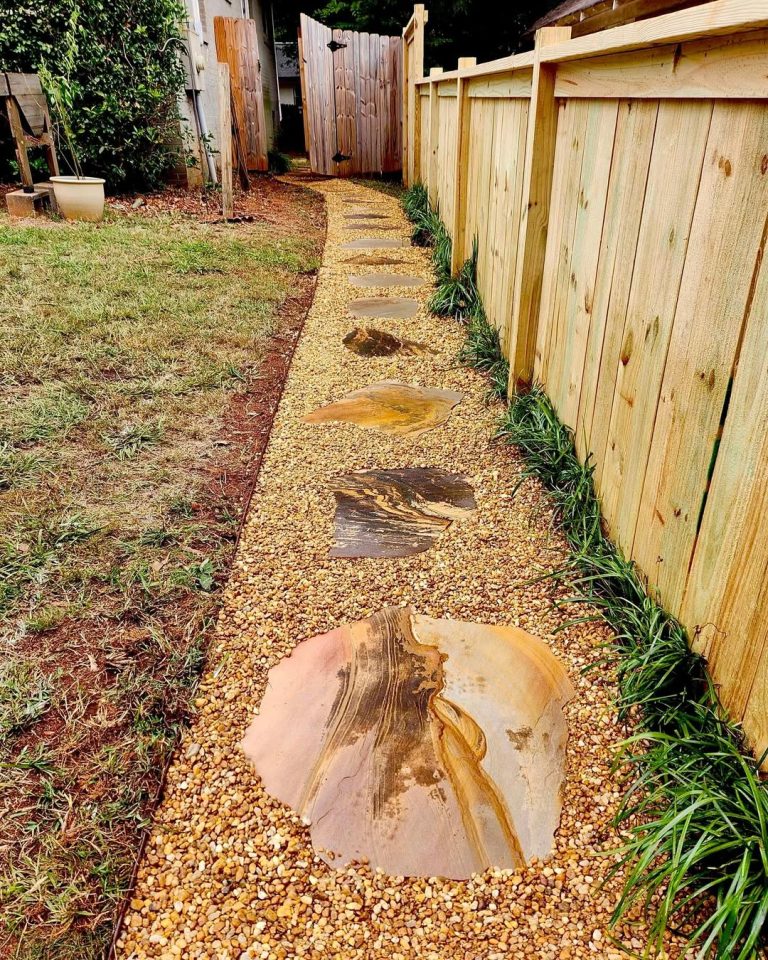15 Hydrangea Companion Plants For Your Garden
Hydrangeas are one of the most beloved plants in the gardening world, known for their lush blooms and vibrant colors. However, their beauty can be further enhanced when paired with the right companion plants. Companion planting not only adds to the aesthetic appeal of your garden but also creates a healthier environment for your plants to thrive. In this guide, we’ll explore the best companion plants for hydrangeas and how to create stunning combinations in your garden.
Understanding Hydrangeas
Before diving into companion plants, it’s important to understand the growing conditions hydrangeas prefer. Hydrangeas thrive in partial to full sun and well-draining, slightly acidic soil. They vary in their sun tolerance, with some varieties preferring more shade while others can handle full sun. Knowing the specific needs of your hydrangea variety is crucial for successful companion planting.
Top Companion Plants for Hydrangeas
1. Astilbe
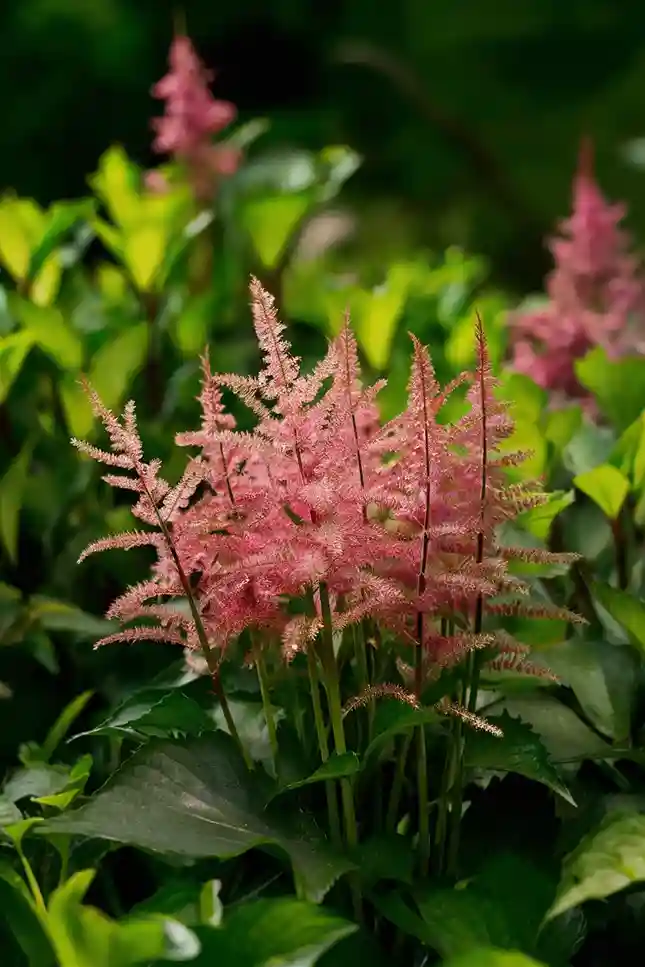
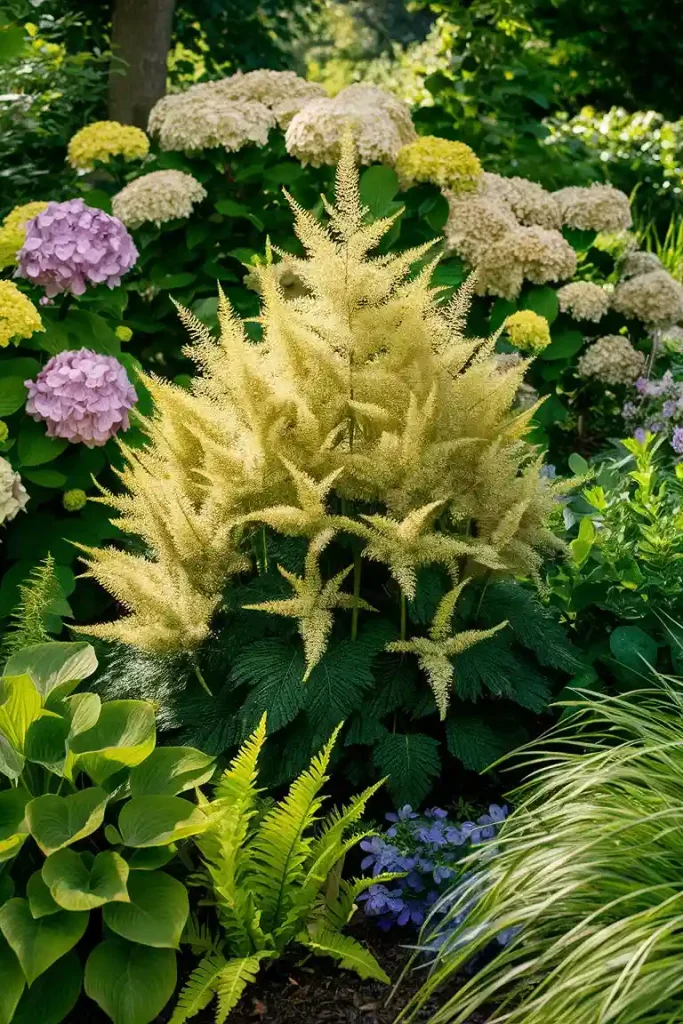
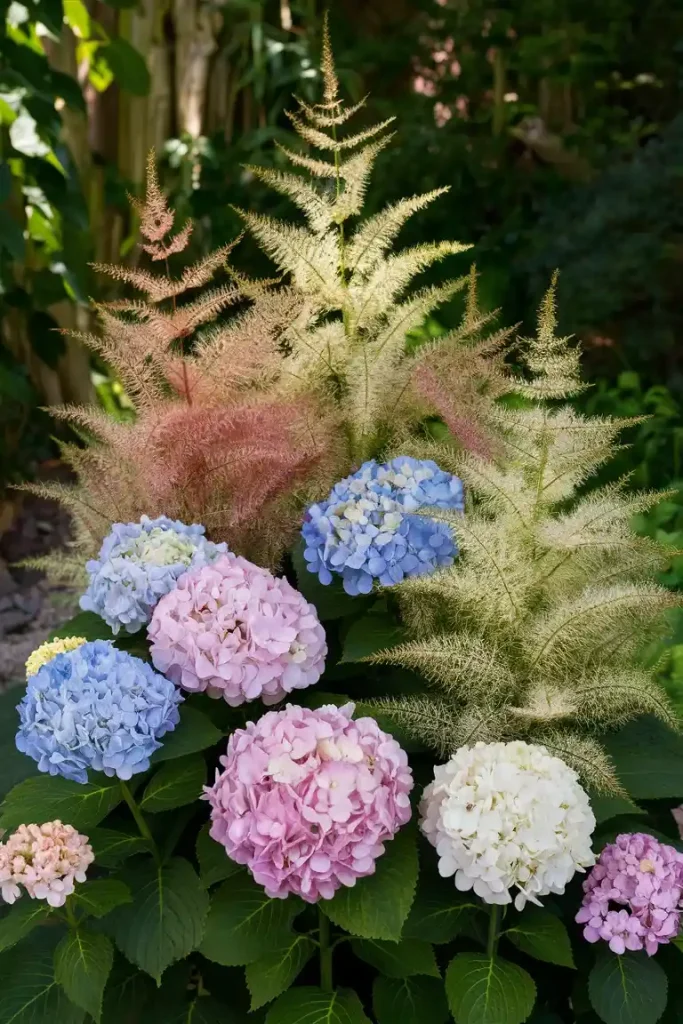
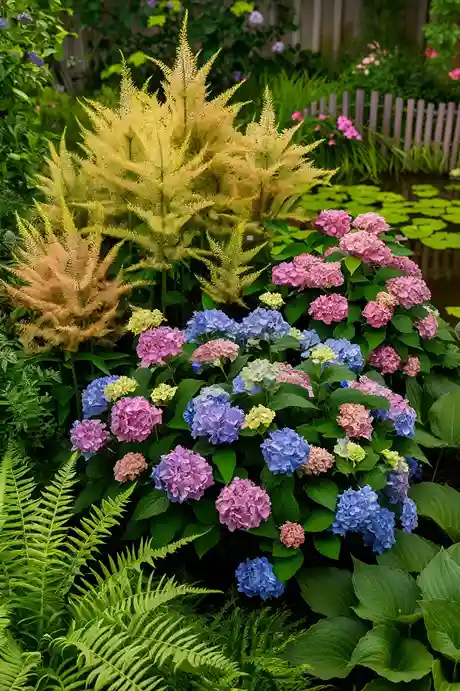
- Scientific Name: Astilbe
- Plant Type: Perennial
- Geographic Origin: Asia
- Height: 12-36 inches
- Width: 24 inches
- Sun Exposure: Full shade to partial shade
- Plant Zone: 3 to 8
Astilbe is a perennial that offers delicate, lace-like foliage and spiky flowers. It thrives in full to partial shade, making it an excellent companion for shade-loving hydrangeas. With blooms in a variety of colors, Astilbe adds a whimsical charm to your garden.
2. Azalea
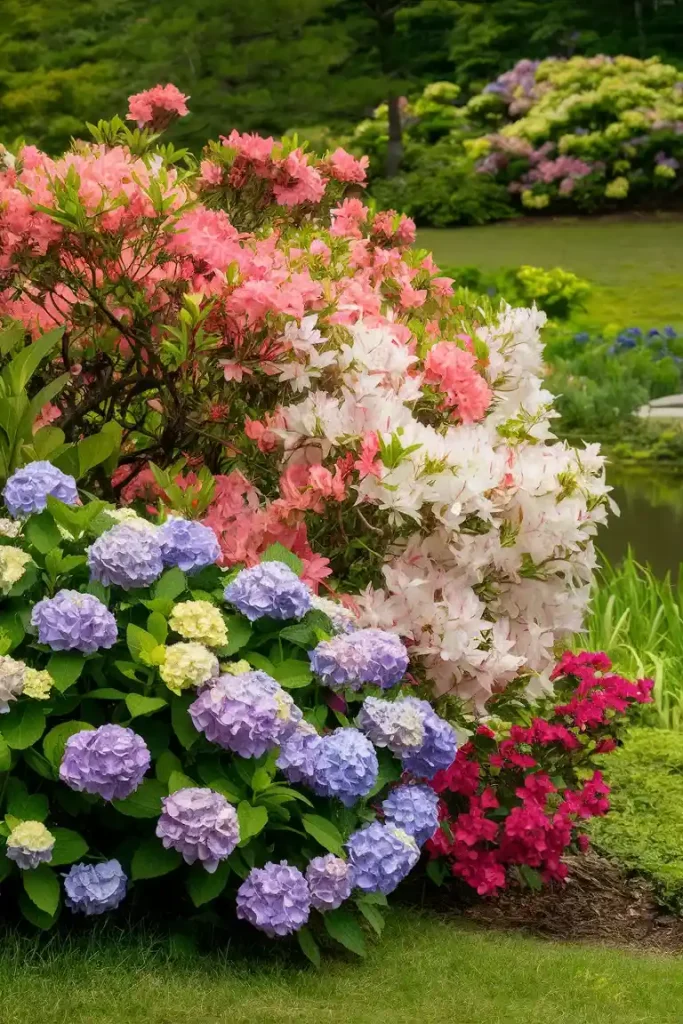
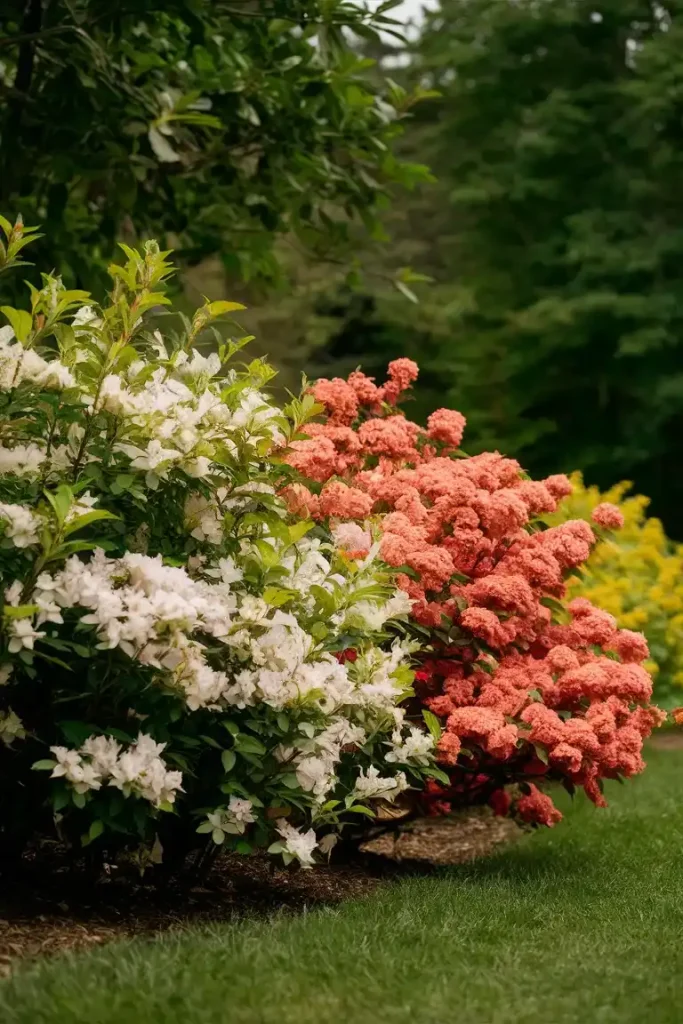
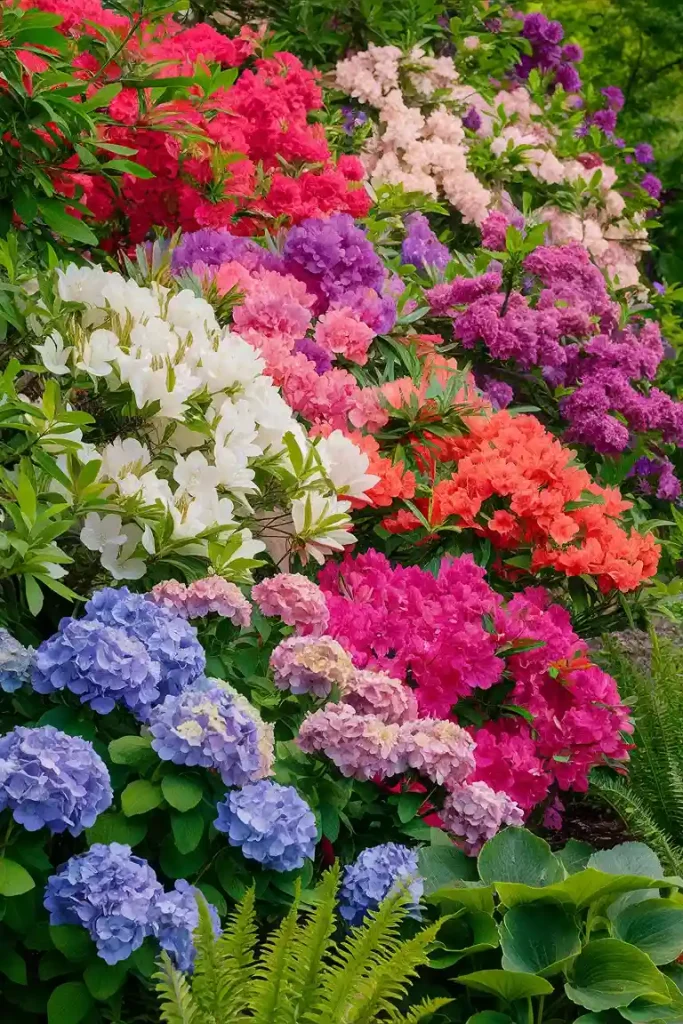
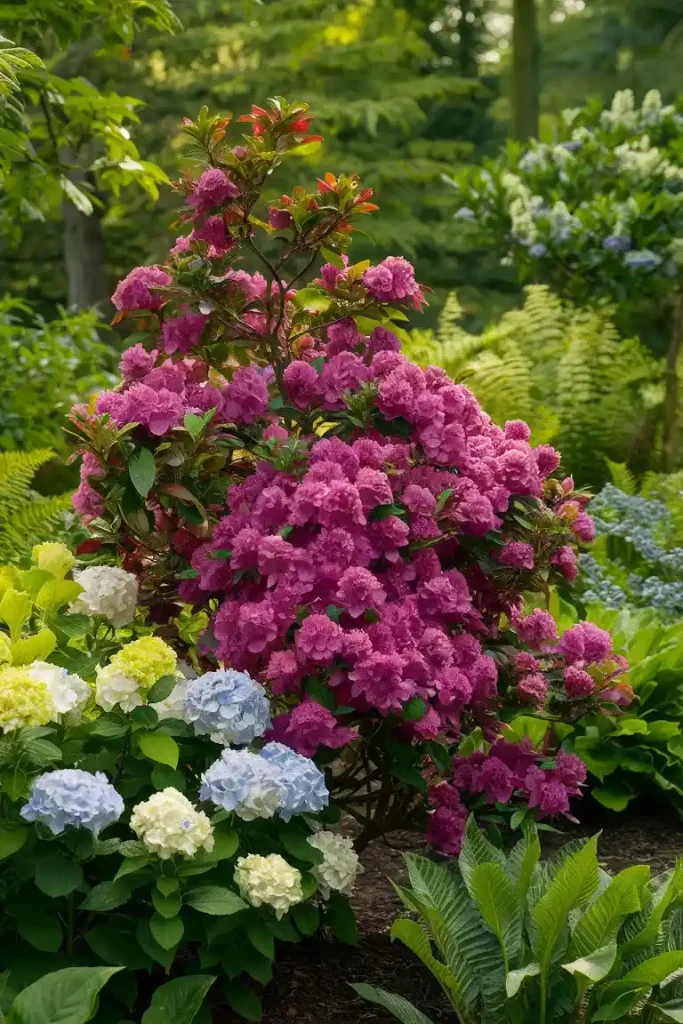
- Scientific Name: Rhododendron
- Plant Type: Both evergreen and deciduous shrubs
- Geographic Origin: China and Japan
- Height: 1-2 feet
- Sun Exposure: Partial sun to full shade
- Plant Zone: 3 to 9
Azaleas share similar soil preferences with hydrangeas, thriving in acidic, well-draining soil. They bloom in the spring, offering a beautiful contrast to the summer blooms of hydrangeas. Available in a range of colors, azaleas can complement any garden palette.
3. Campanula (Bellflower)
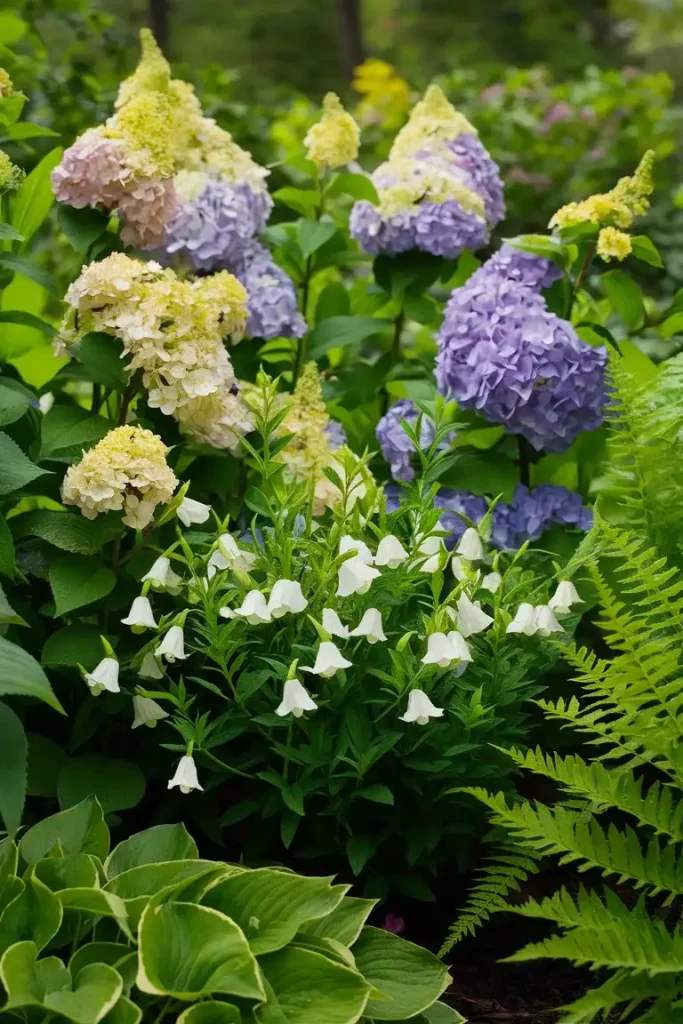
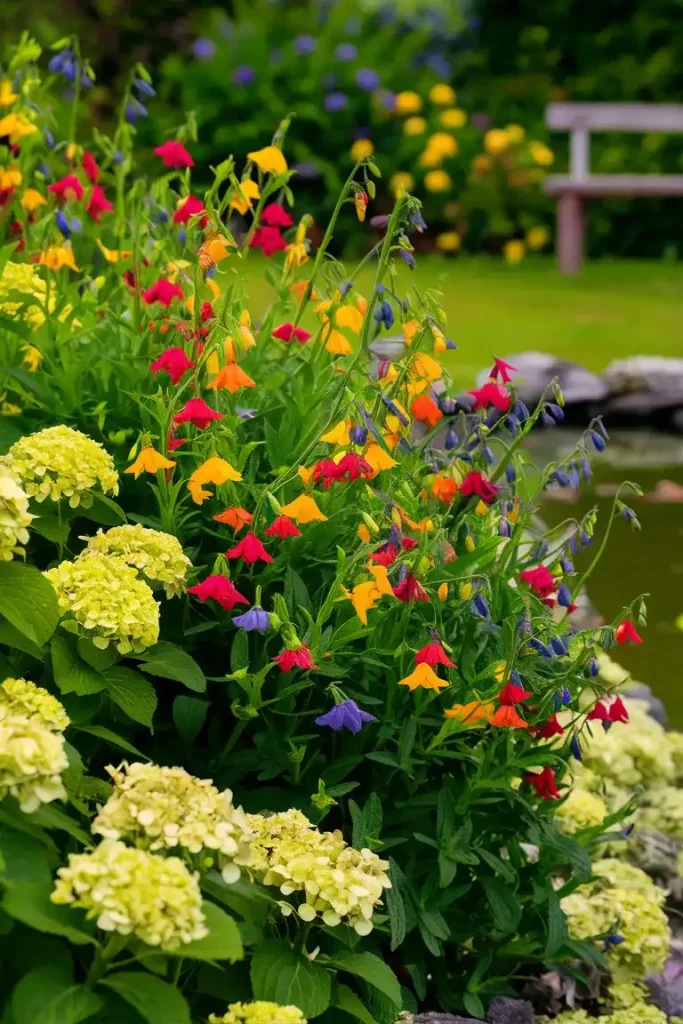
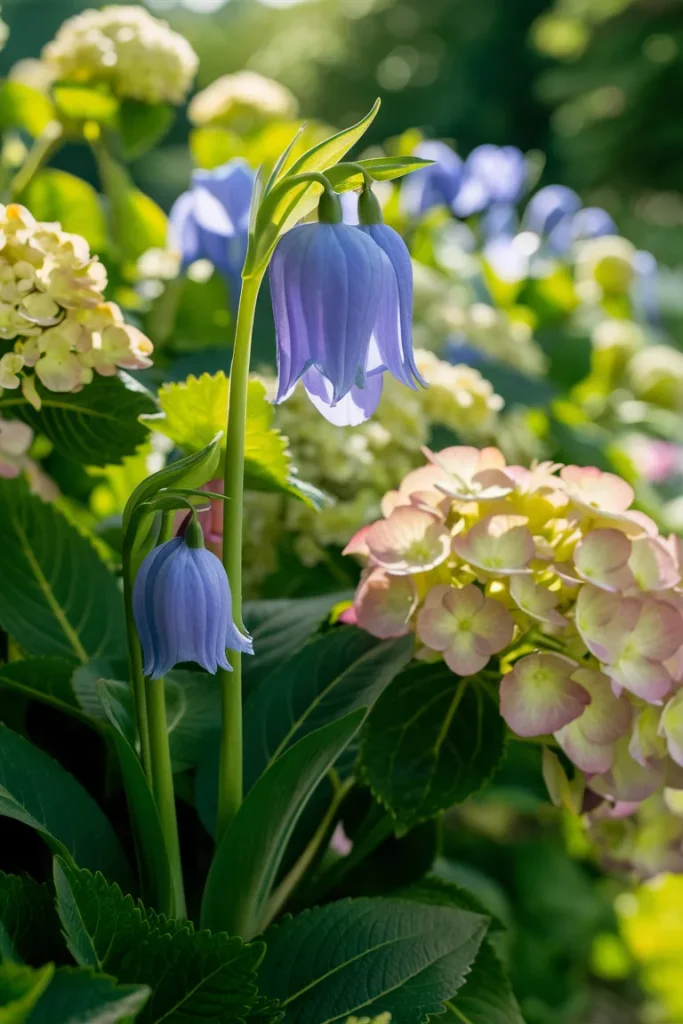
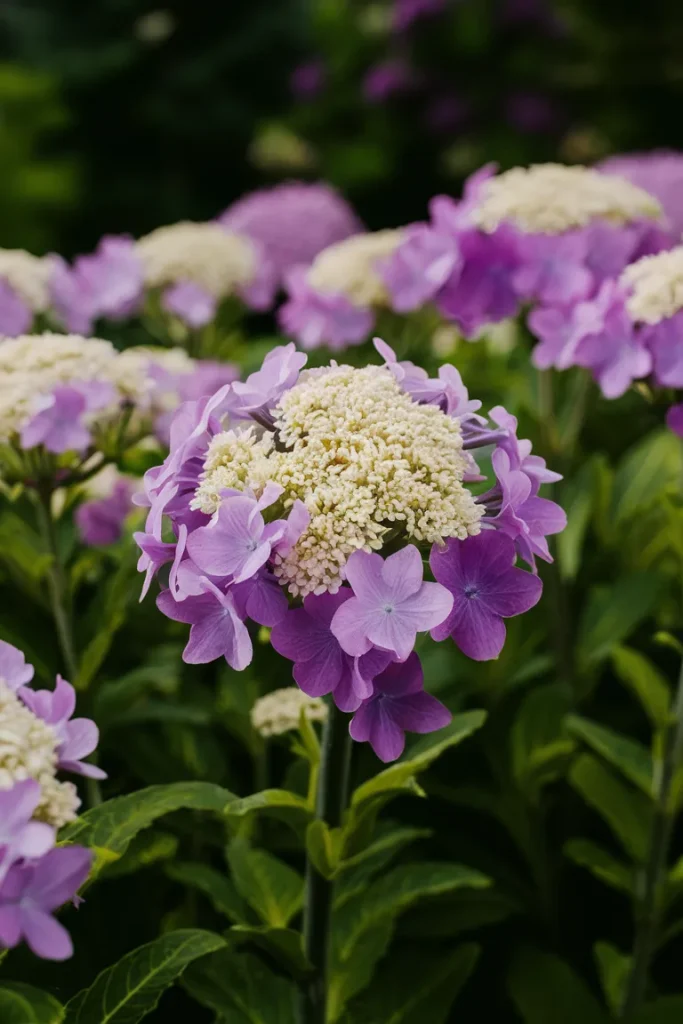
- Scientific Name: Campanula
- Plant Type: Perennial
- Geographic Origin: Mediterranean
- Height: 3 inches to 3 feet
- Sun Exposure: Partial shade to full sun
- Plant Zone: 4 to 8
Campanula, or bellflower, is a versatile perennial that blooms from June to fall. It requires full sun to partial shade, making it perfect for pairing with sun-tolerant hydrangeas. Its bell-shaped flowers add a unique texture to the garden.
4. Dogwood
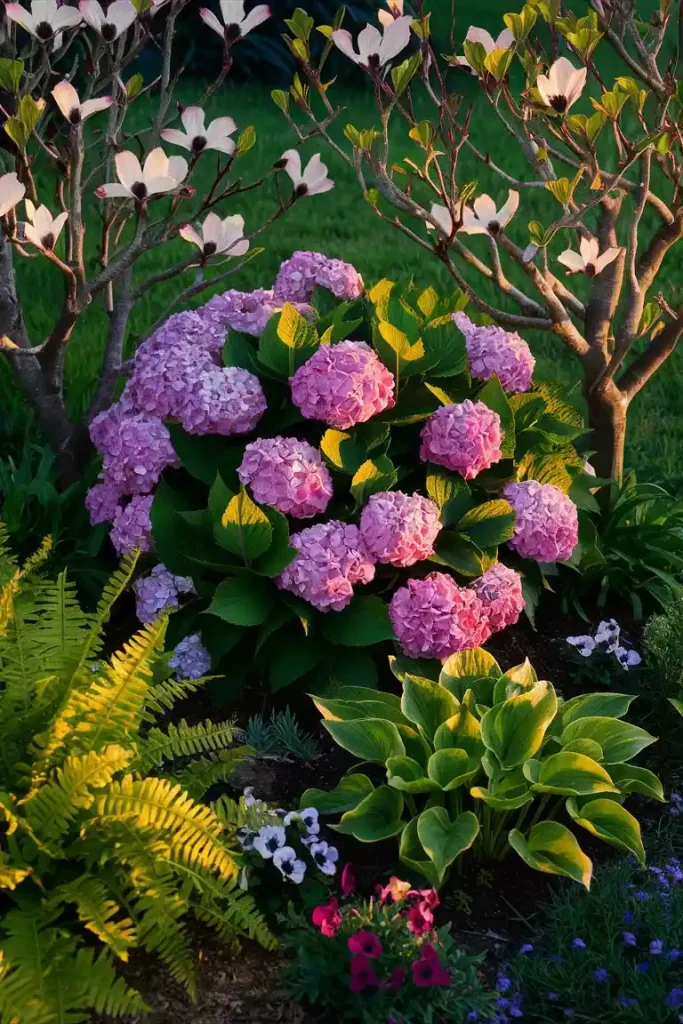
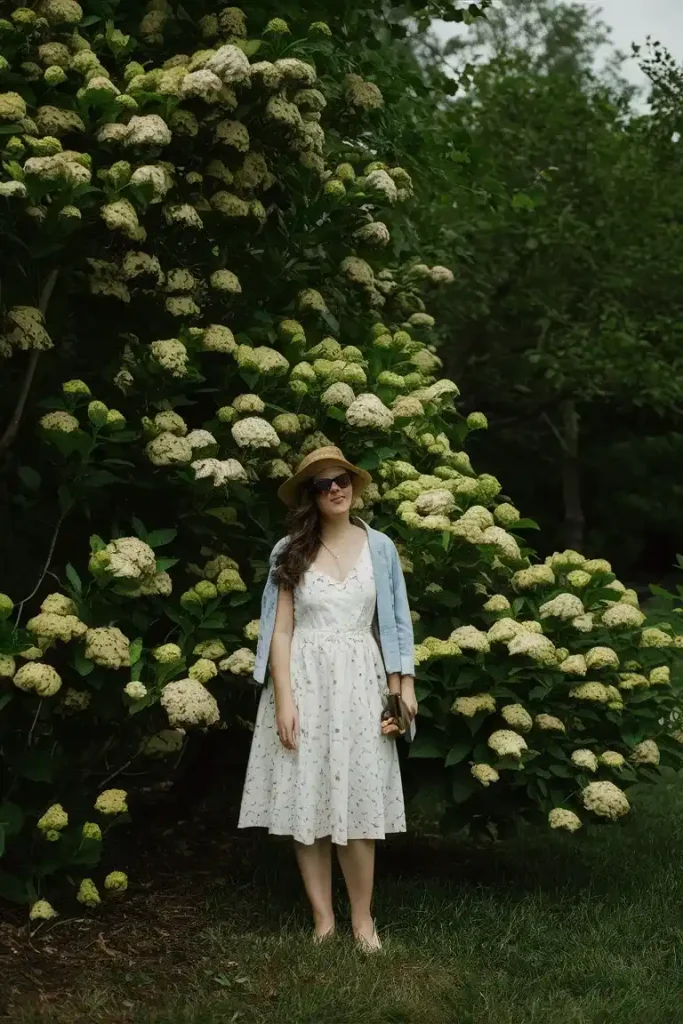
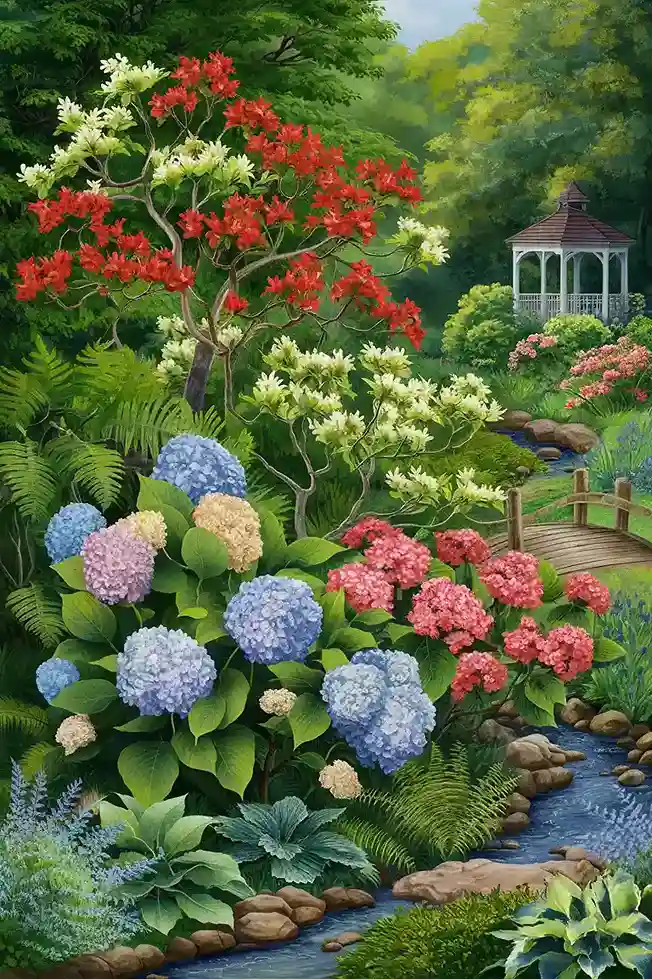
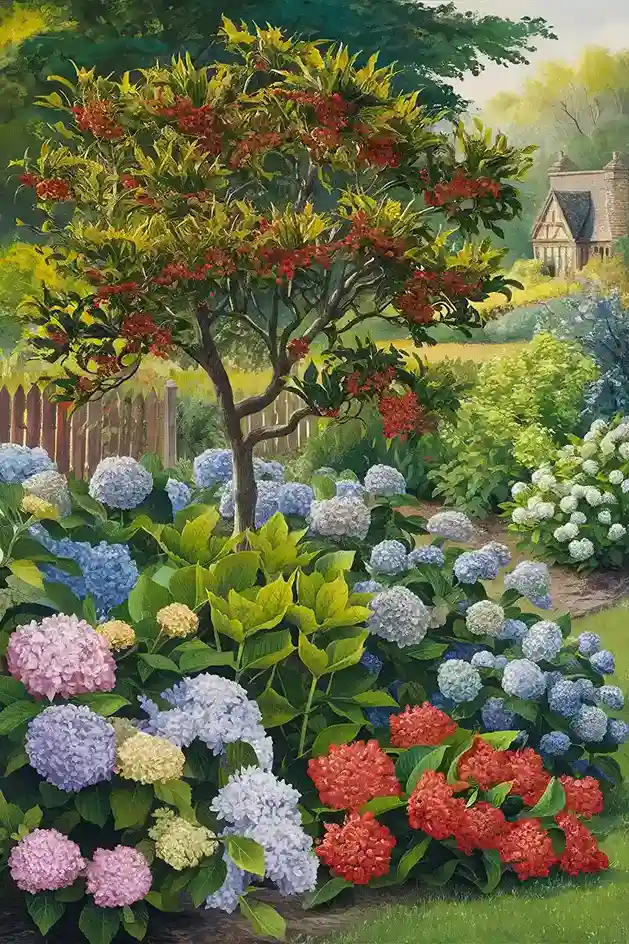
- Scientific Name: Cornus florida
- Plant Type: Flowering Tree
- Geographic Origin: America
- Height: 3-20 feet +
- Sun Exposure: Partial shade to full sun
- Plant Zone: 5 to 9
Dogwood trees are ideal for creating a layered garden. Their blossoms in late spring provide a beautiful backdrop for hydrangeas. Dogwoods also offer shade, which can be beneficial for hydrangeas that prefer less direct sunlight.
5. Fern
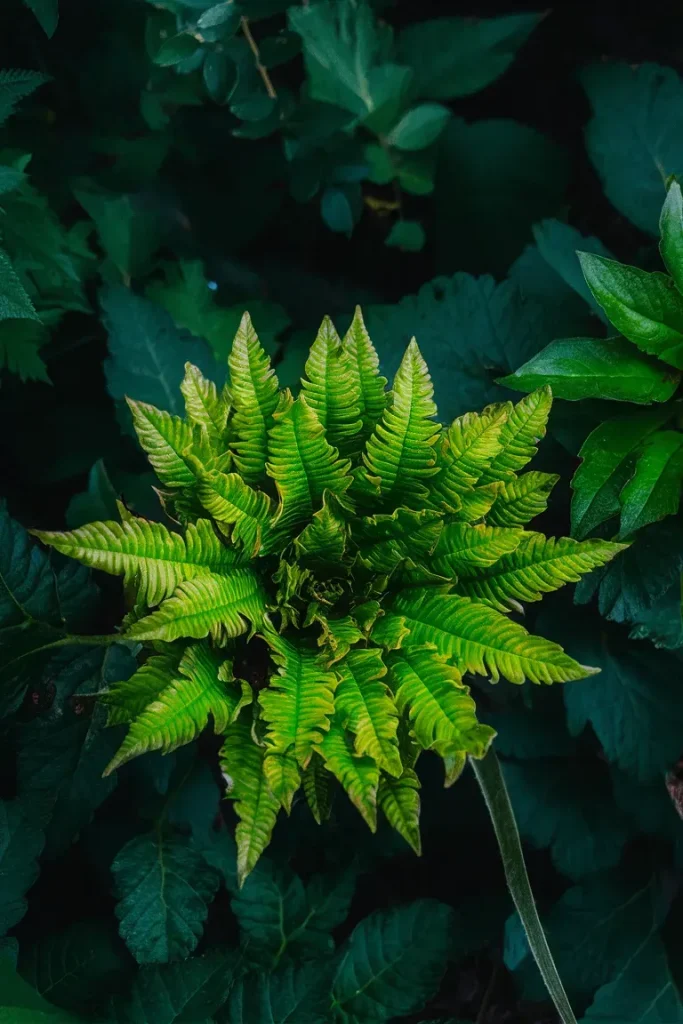
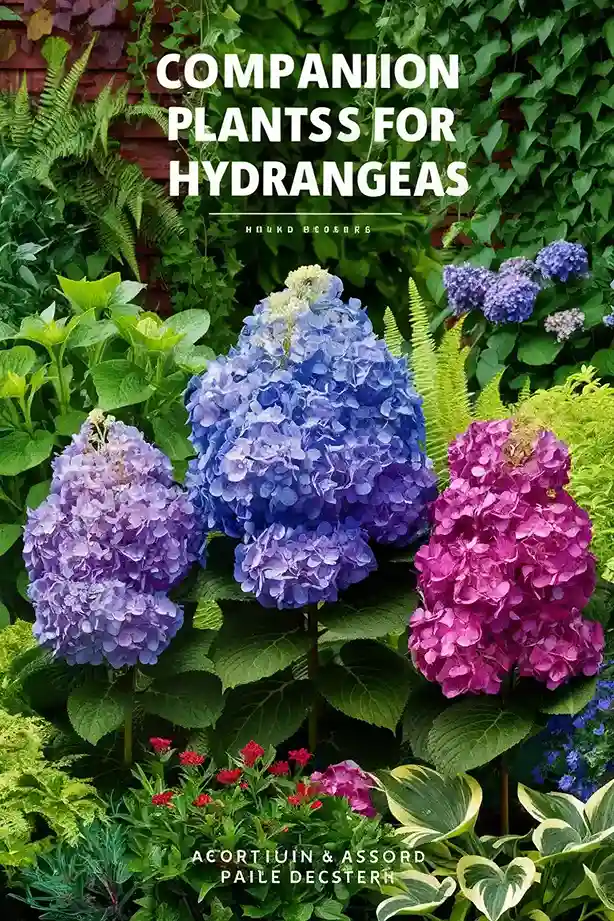
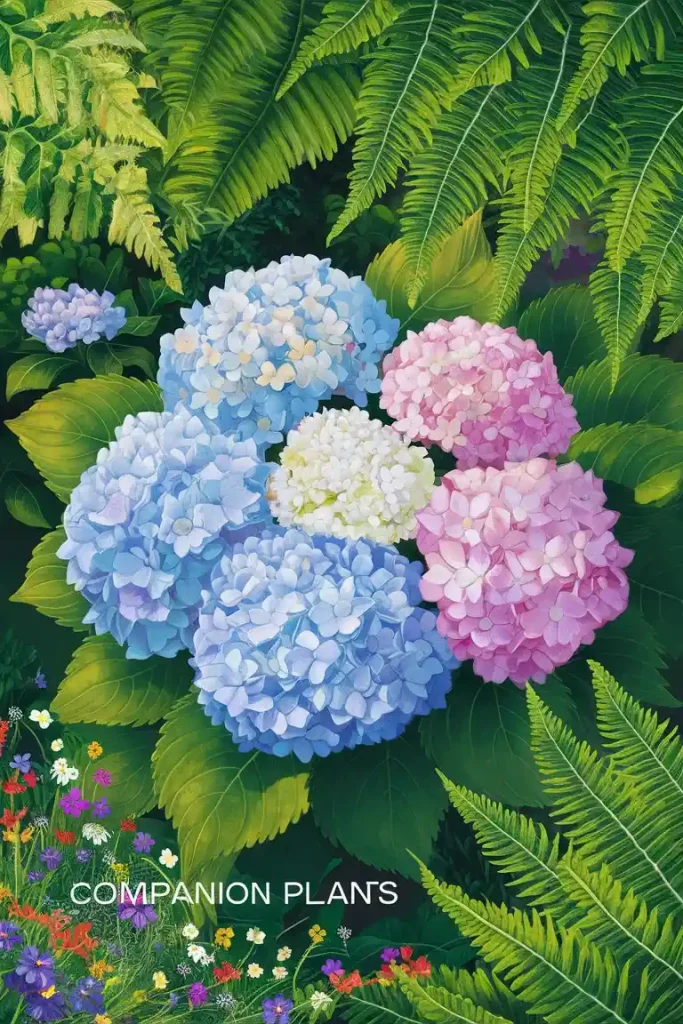
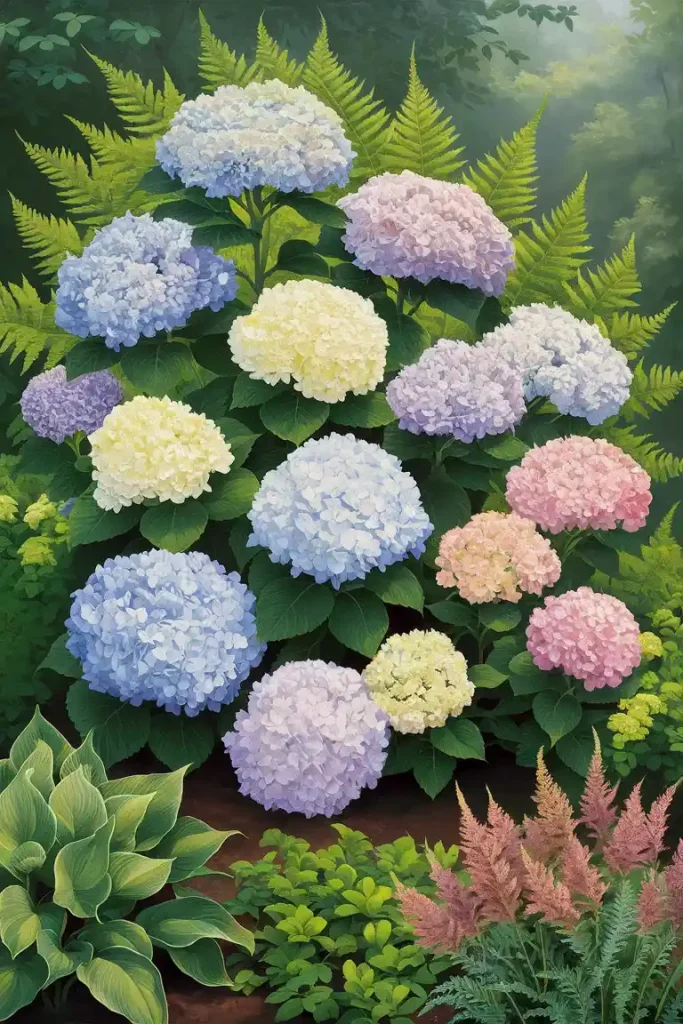
- Scientific Name: Tracheophyta
- Plant Type: Perennial
- Geographic Origin: Various
- Height: 2-4 feet
- Sun Exposure: Full sun to full shade
- Plant Zone: 4 to 8
Ferns are perfect for adding lush greenery to your garden. They thrive in shaded areas and prefer constant moisture, complementing the needs of hydrangeas. Ferns’ feathery fronds add a soft texture that contrasts beautifully with hydrangea blooms.
6. Heuchera (Coral Bells)
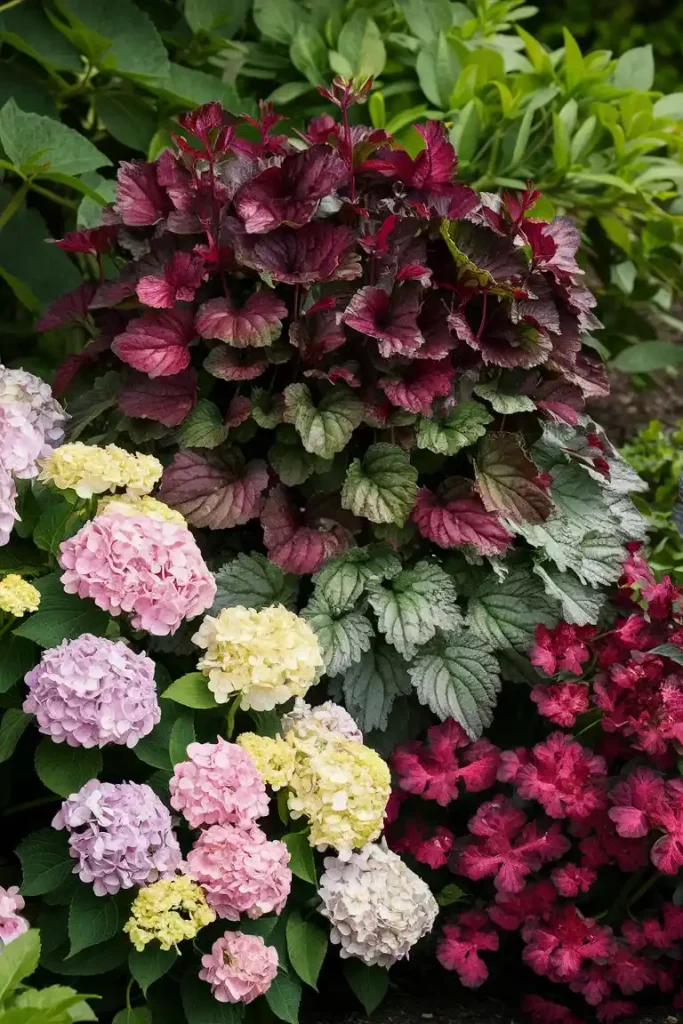
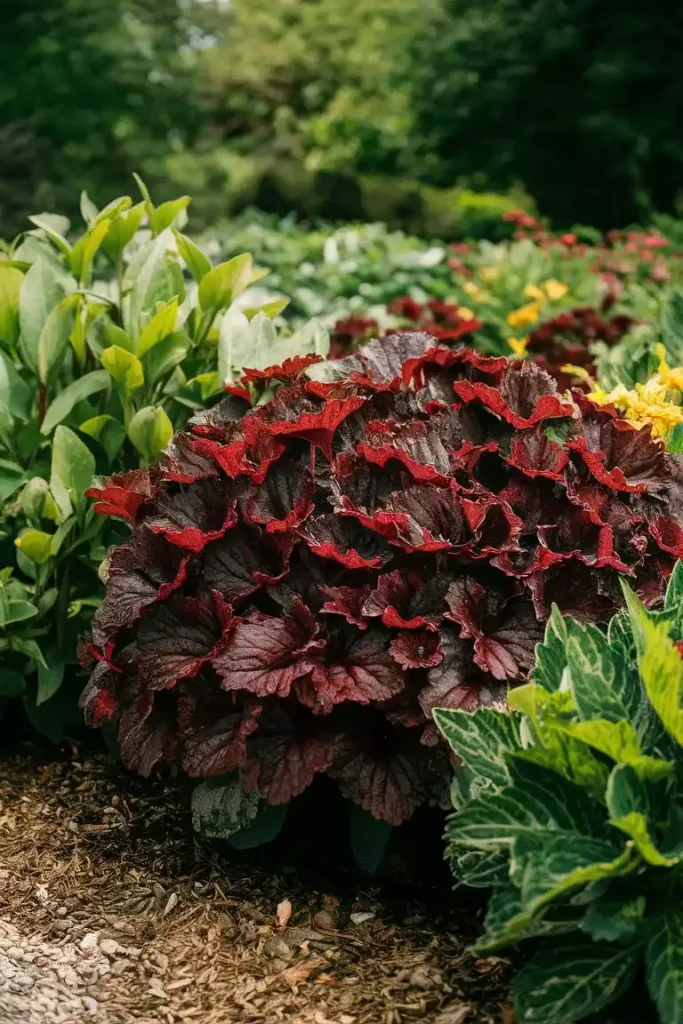
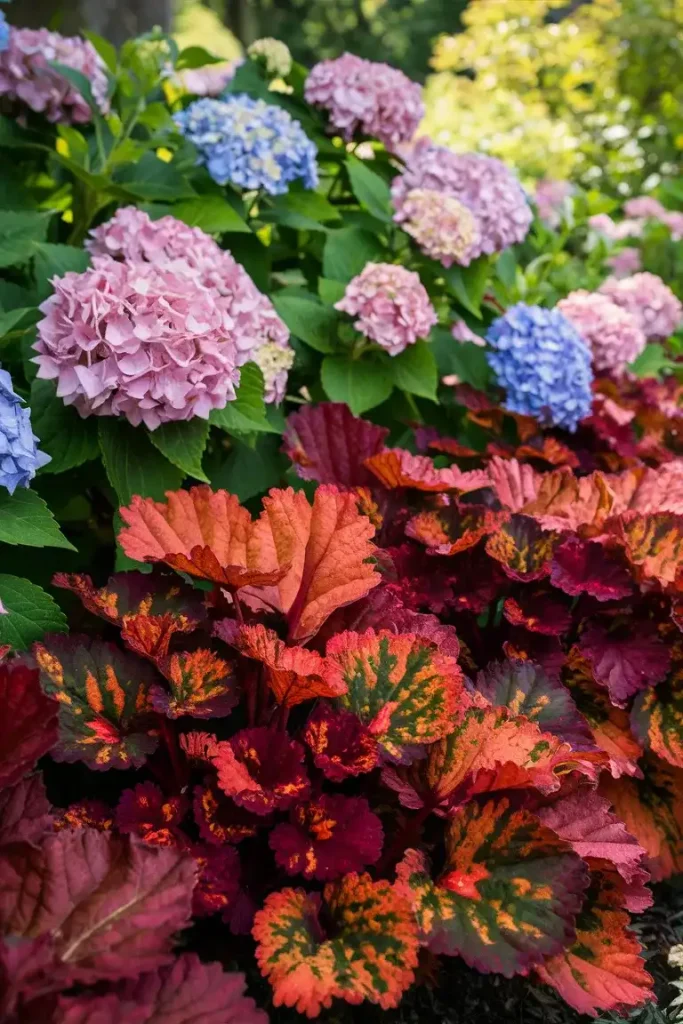
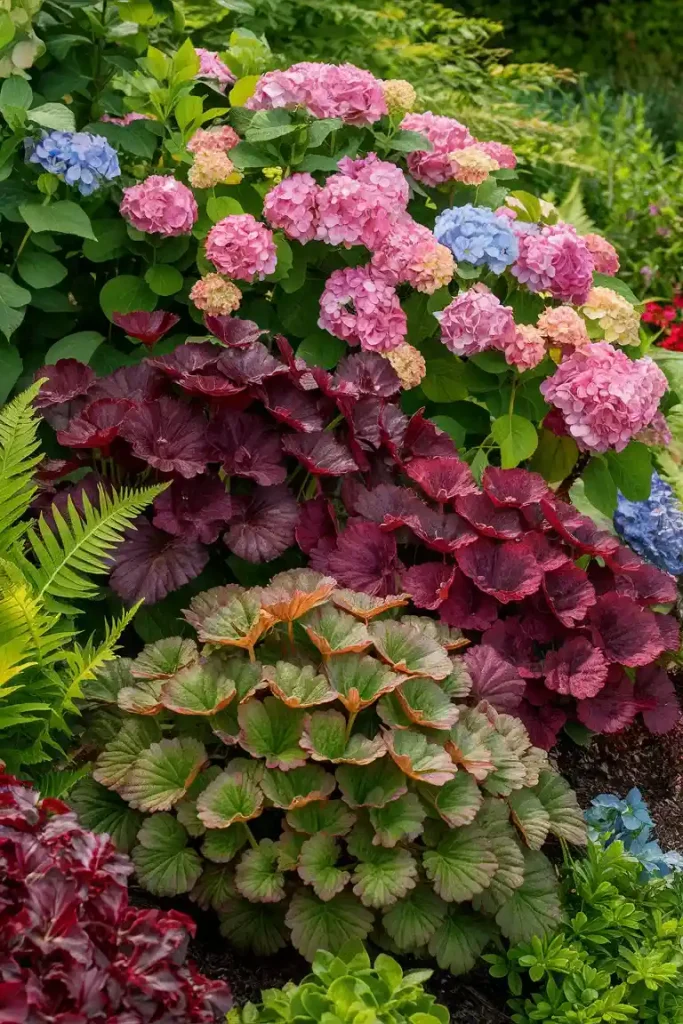
- Scientific Name: Heuchera
- Plant Type: Herbaceous Perennial
- Geographic Origin: North America
- Height: 8 to 18 inches
- Sun Exposure: Partial shade to full sun
- Plant Zone: 4 to 8
Heuchera is a perennial known for its colorful foliage, ranging from deep purples to bright greens. It thrives in partial shade to full sun, making it a versatile companion for hydrangeas. Coral bells also attract pollinators, adding life to your garden.
7. Hosta
- Scientific Name: Hosta
- Plant Type: Perennial
- Geographic Origin: Various
- Height: 6 inches to 48 inches
- Width: 18 inches to 6 feet
- Sun Exposure: Partial shade to full shade
- Plant Zone: 3 to 8
Hostas are shade-loving perennials with large, textured leaves that come in various shades of green and blue. They thrive in the same conditions as hydrangeas and add a bold foliage contrast that enhances the overall garden design.
8. Japanese Forest Grass
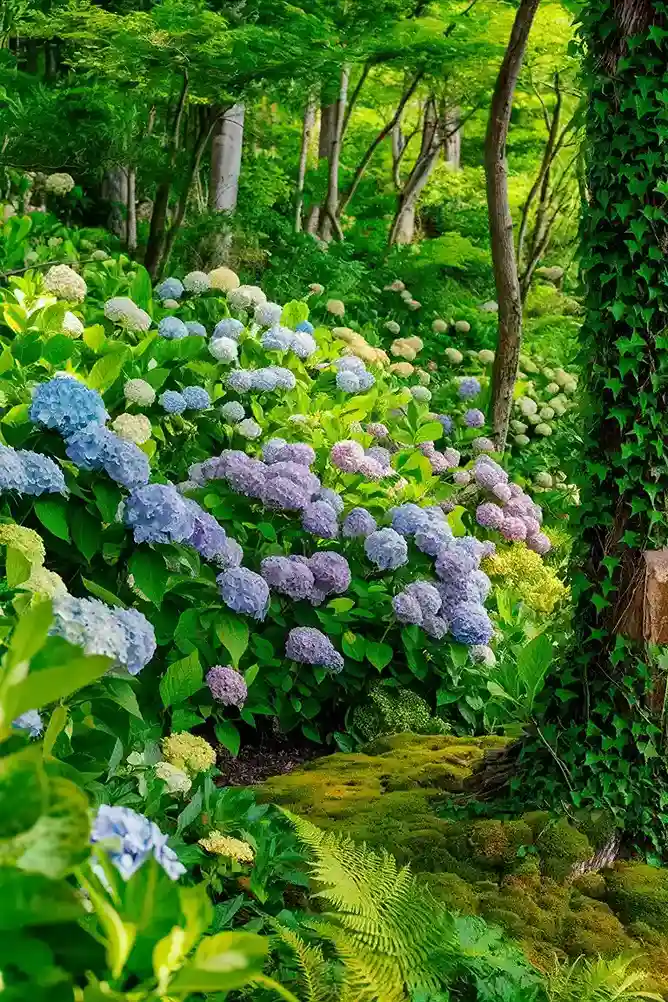
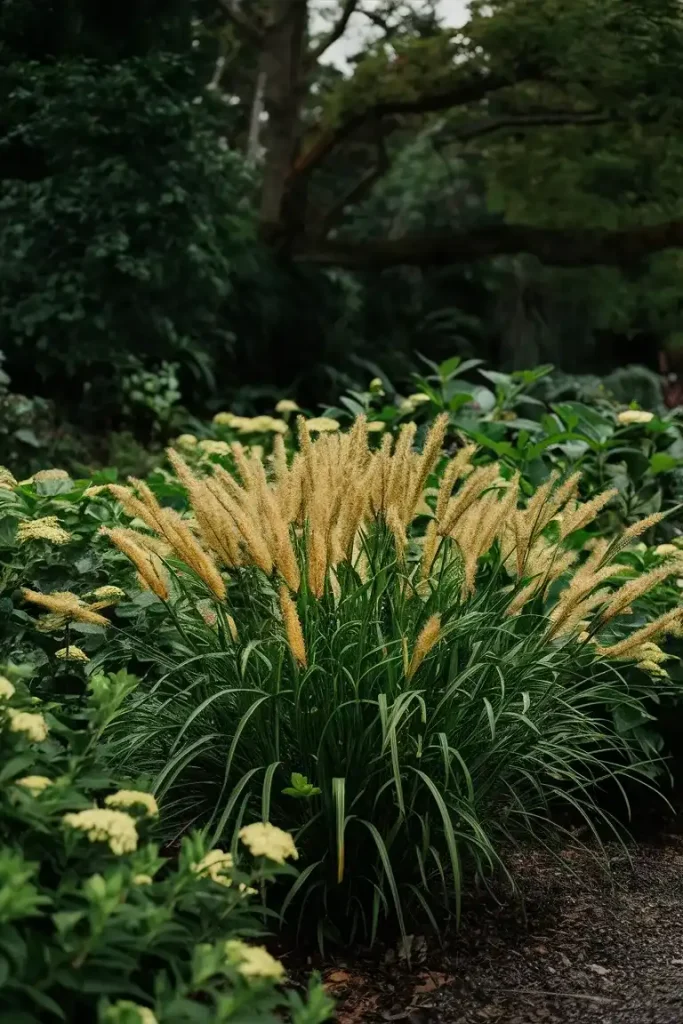
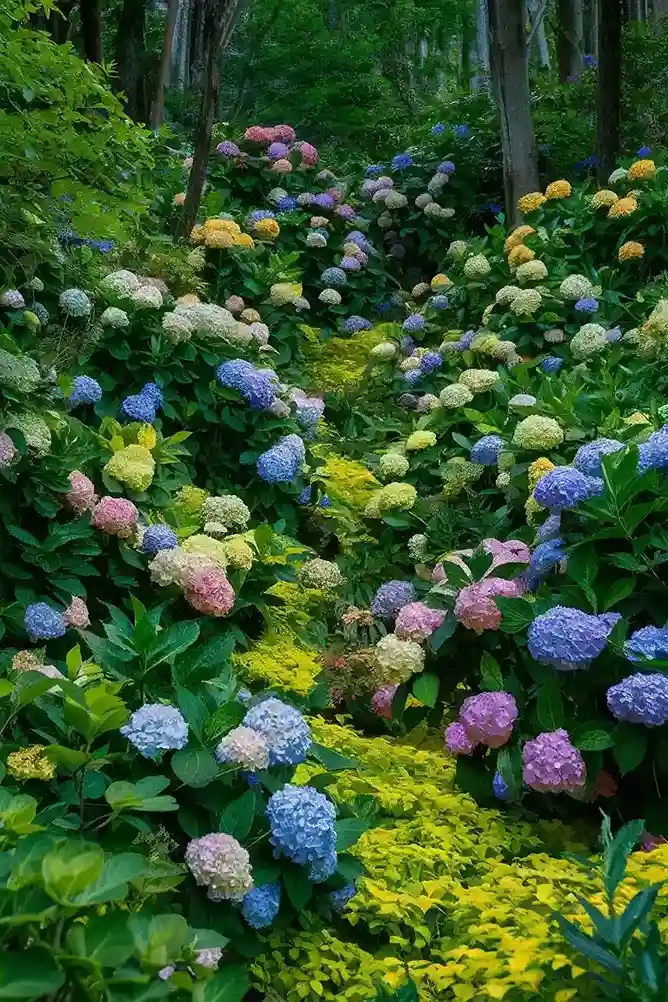
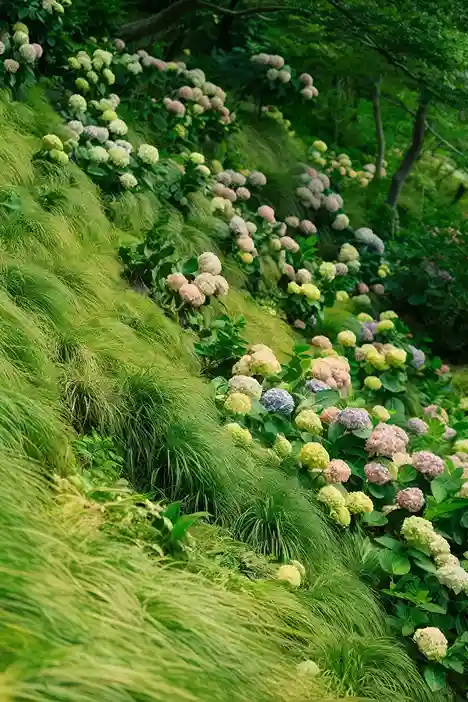
- Scientific Name: Hakonechloa macra
- Plant Type: Ornamental Grass
- Geographic Origin: Japan
- Height: 12-18 inches
- Sun Exposure: Partial shade to full sun
- Plant Zone: 5 to 9
This ornamental grass is one of the few that thrives in shade. Its bright green, arching foliage adds a graceful movement to the garden. It’s perfect for edging and provides a soft transition between different plant heights.
9. Japanese Maple

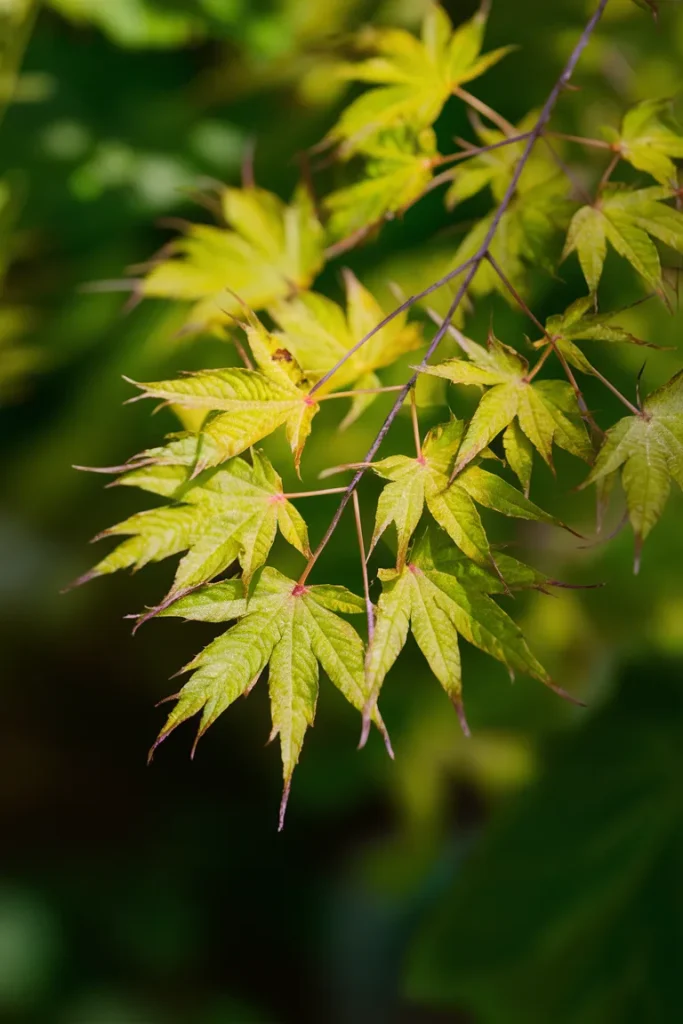
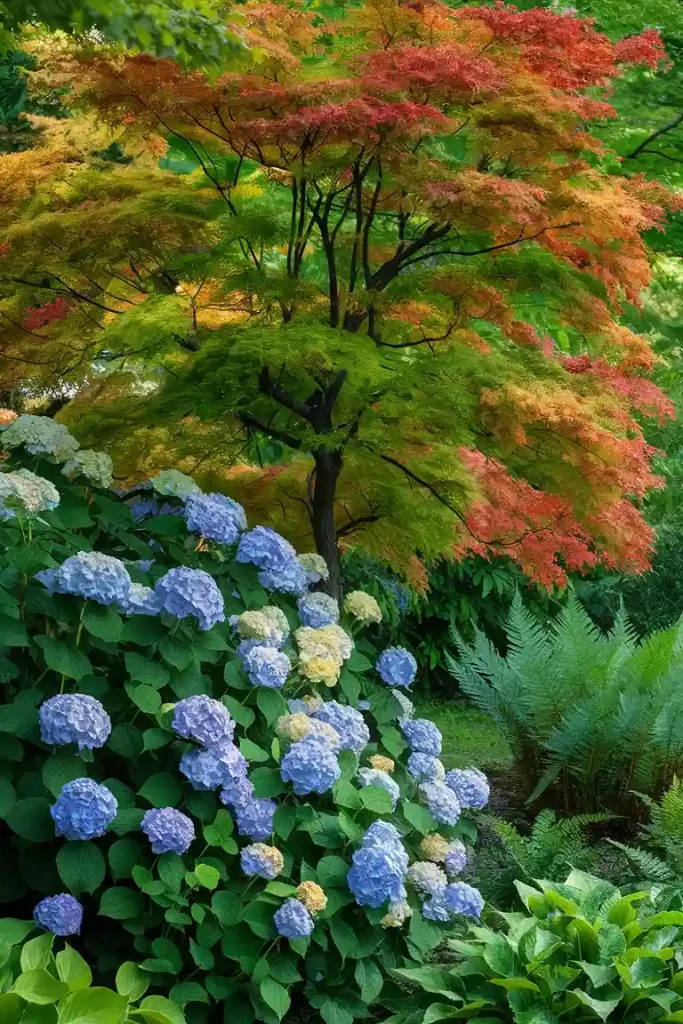
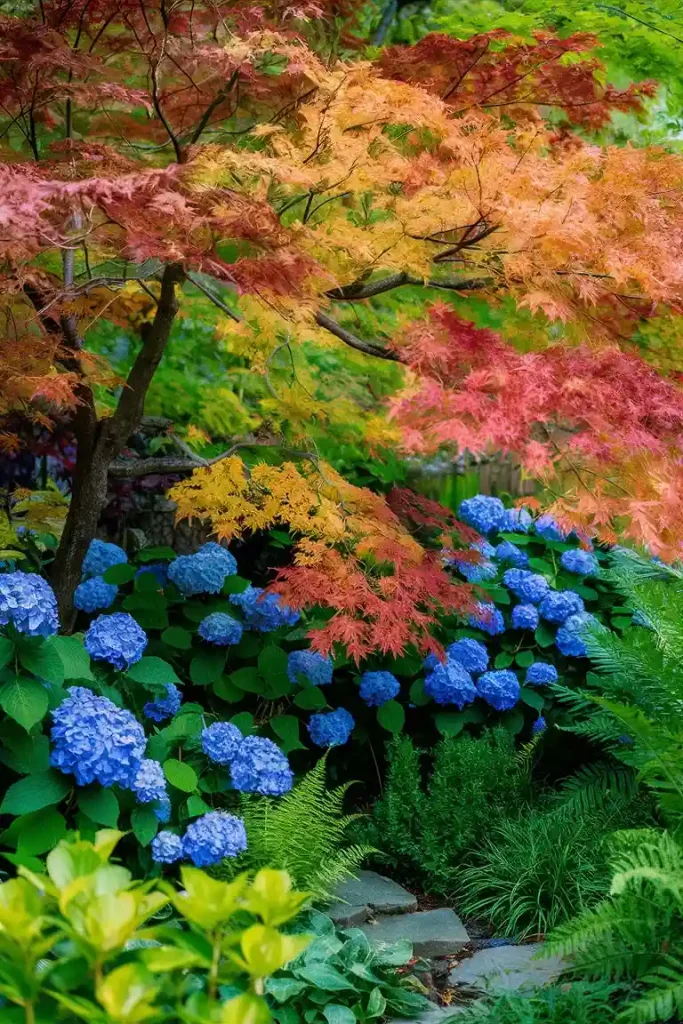
- Scientific Name: Acer palmatum
- Plant Type: Tree
- Geographic Origin: Japan
- Height: 20 feet
- Sun Exposure: Partial shade to full sun
- Plant Zone: 5 to 8
Japanese maples are small trees with stunning red foliage that provides year-round interest. They thrive in partial shade, making them excellent companions for hydrangeas. Their delicate leaves offer a striking contrast to the bold hydrangea flowers.
10. Lamb’s Ear
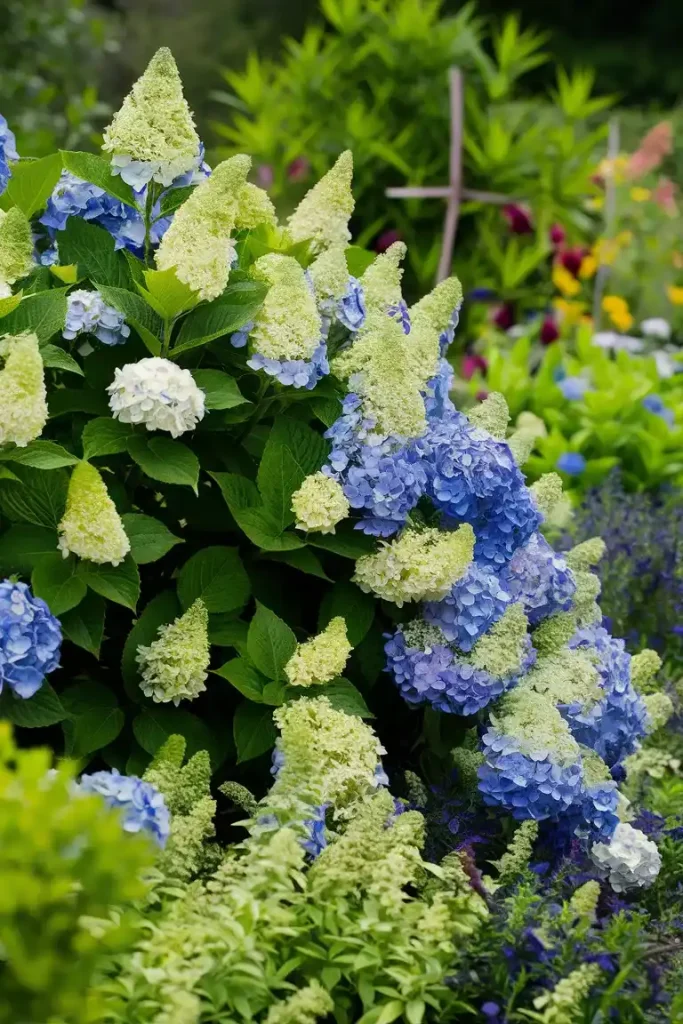
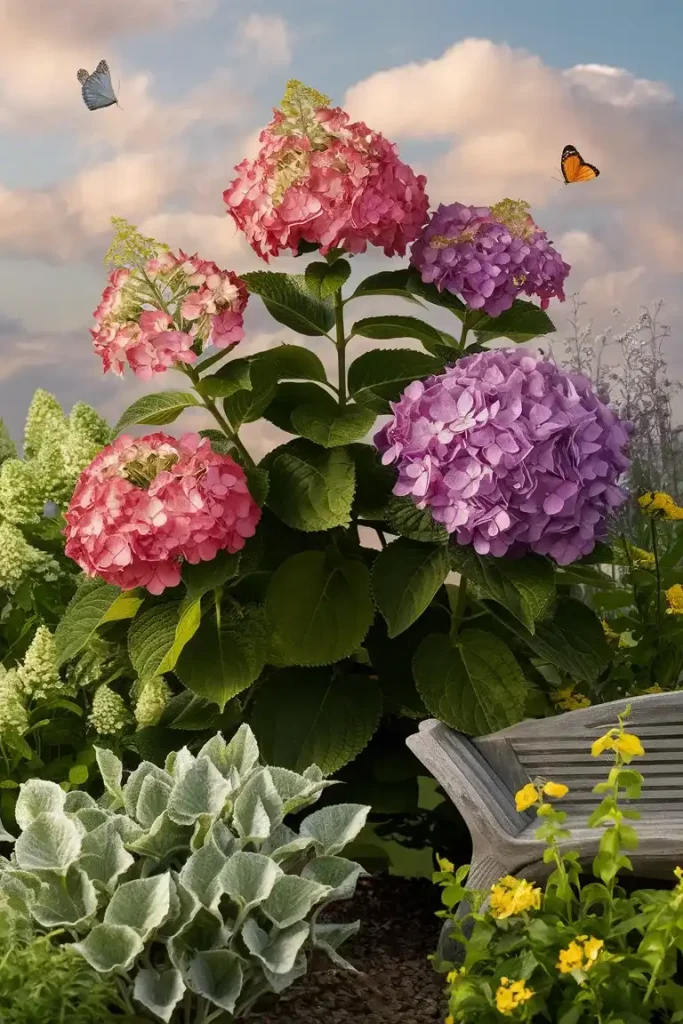
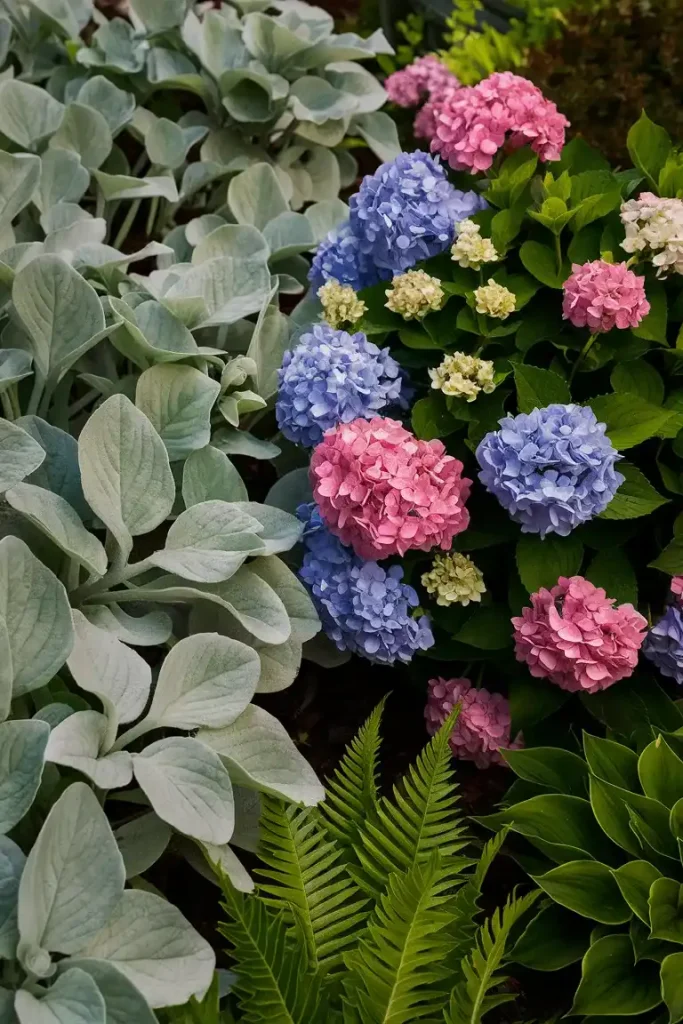
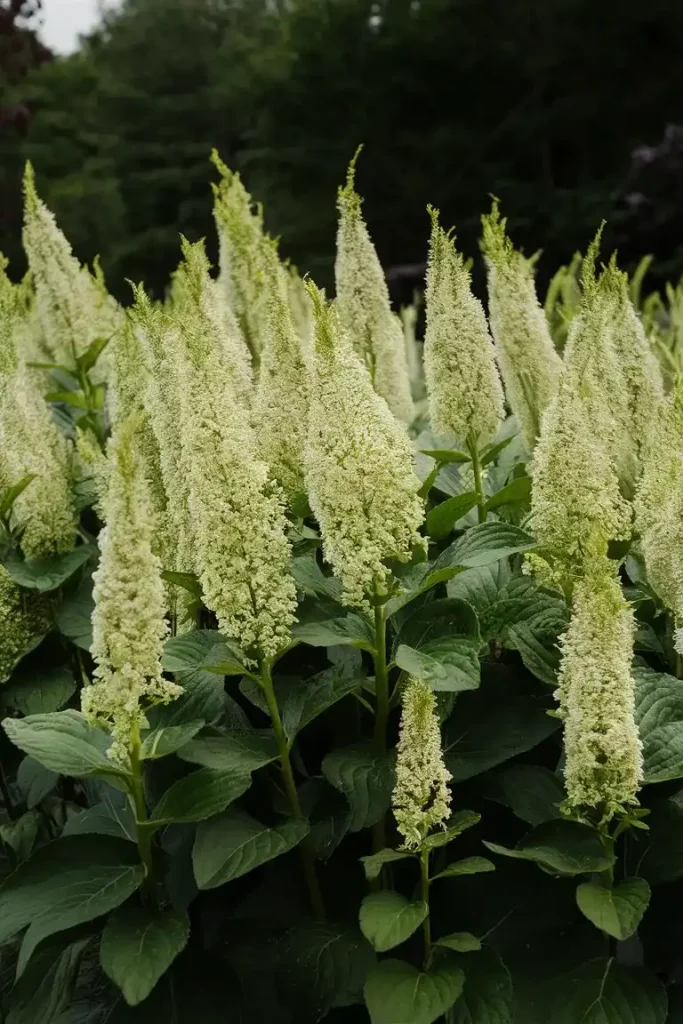
- Scientific Name: Stachys byzantina
- Plant Type: Perennial
- Geographic Origin: Middle East
- Height: 12-18 inches
- Sun Exposure: Partial shade to full sun
- Plant Zone: 4 to 8
Lamb’s ear is a low-growing perennial known for its velvety, silver foliage. It thrives in partial to full sun and adds a soft texture to the garden. Lamb’s ear is an excellent ground cover, creating a cohesive look around your hydrangeas.
11. Nepeta (Catmint)
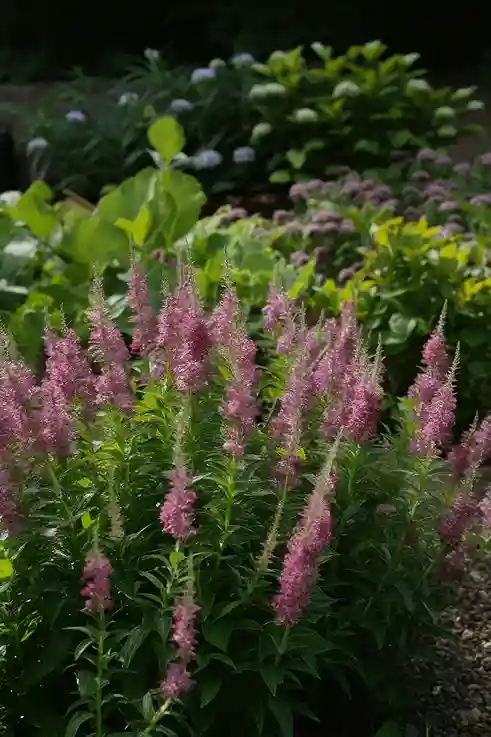
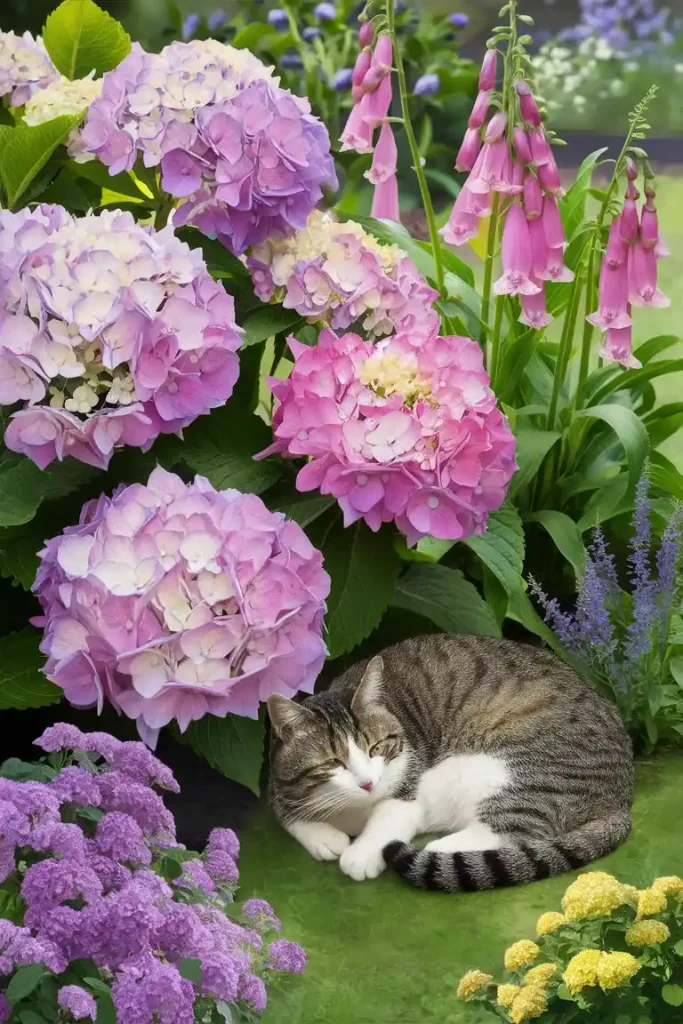
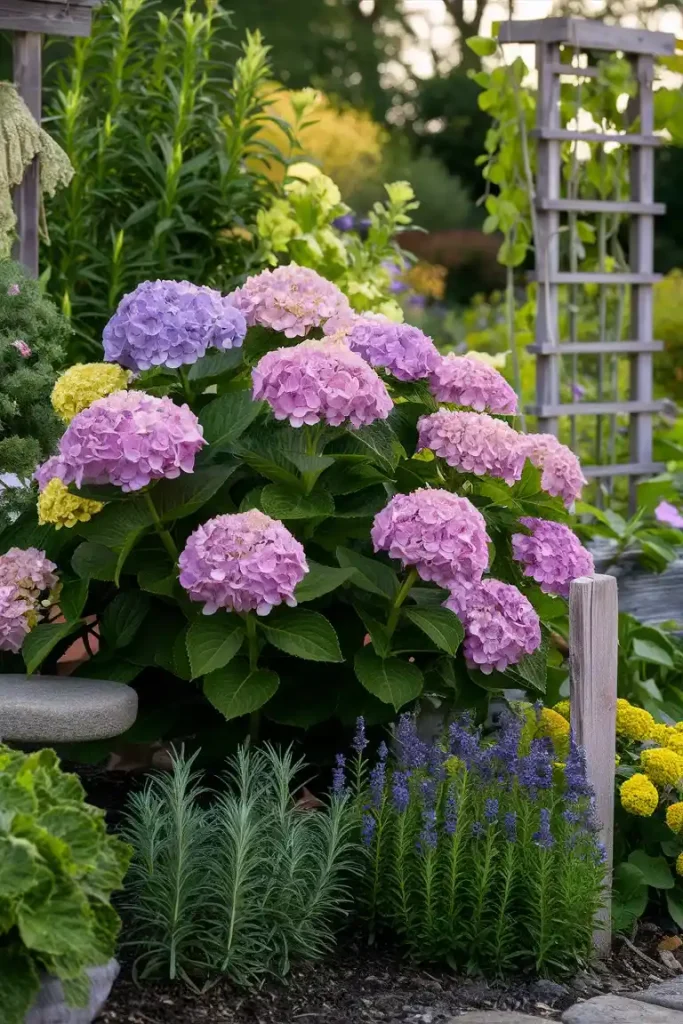
- Scientific Name: Nepeta
- Plant Type: Perennial
- Geographic Origin: Europe
- Height: 10-24 inches
- Sun Exposure: Partial shade to full sun
- Plant Zone: 4 to 8
Nepeta, or catmint, is a sun-loving perennial with aromatic foliage and purple flowers. It pairs well with hydrangeas in sunnier spots and adds a delightful fragrance to the garden. Its silvery-blue foliage contrasts beautifully with hydrangea blooms.
12. Perennial Geranium
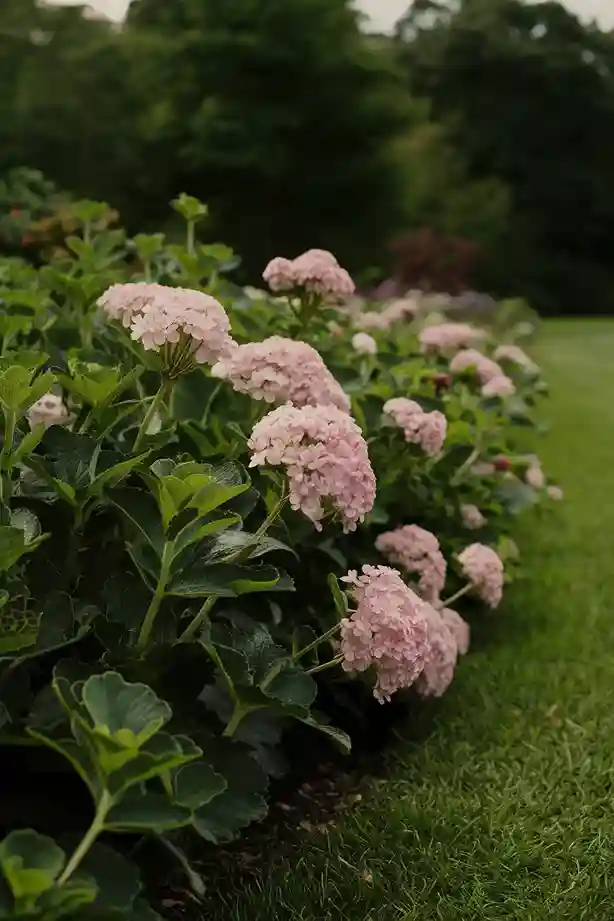
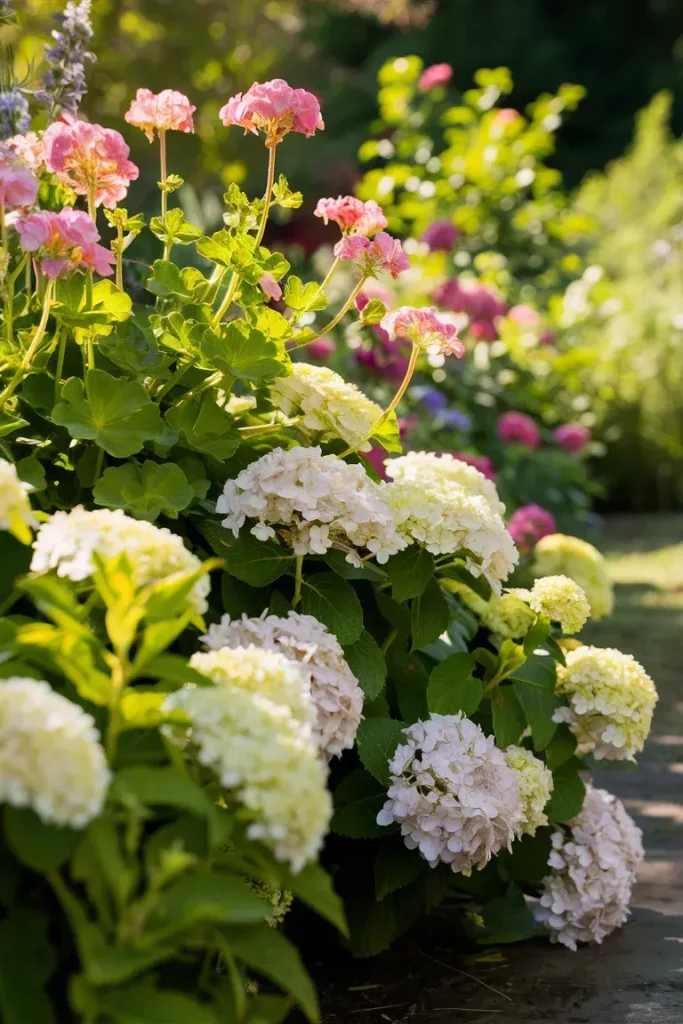
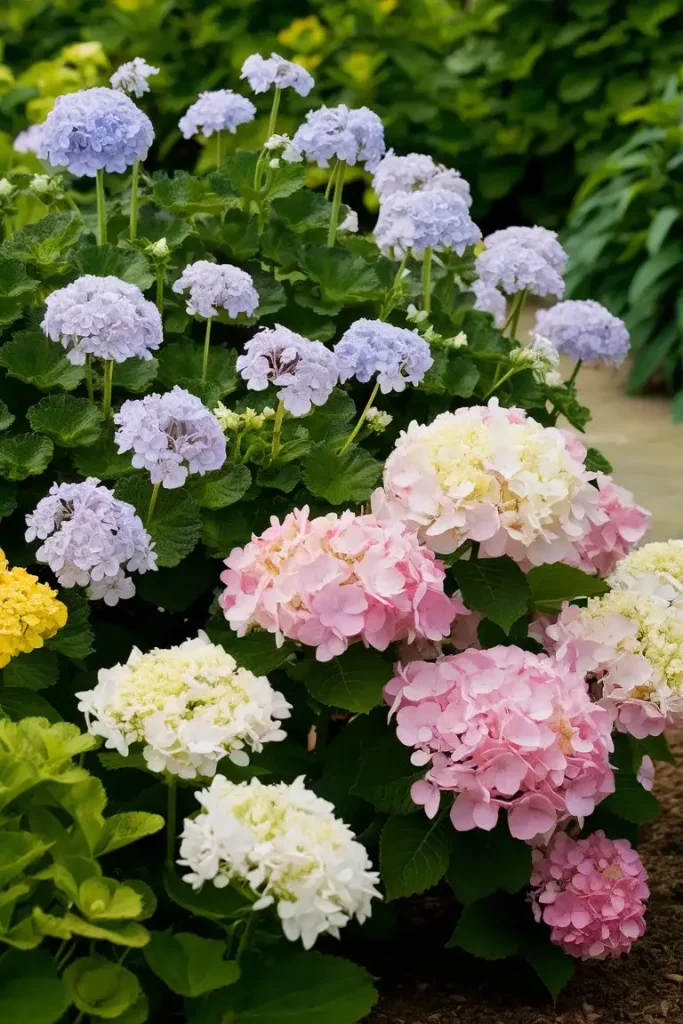
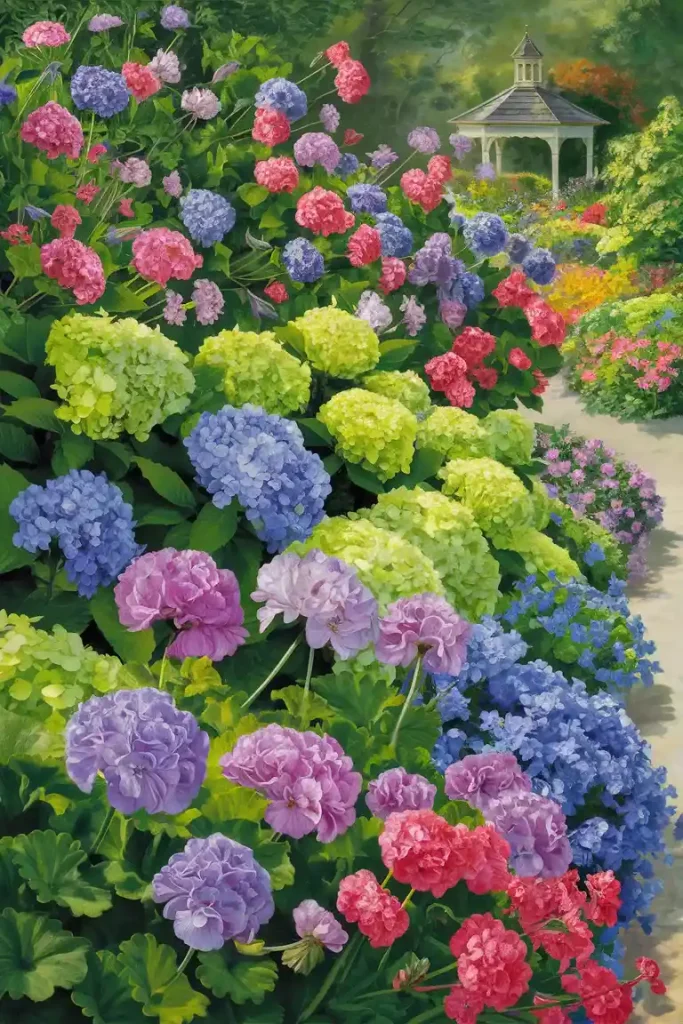
- Scientific Name: Geranium
- Plant Type: Perennial
- Geographic Origin: South Africa
- Height: 4-48 inches
- Sun Exposure: Full sun
- Plant Zone: 4 to 9
Perennial geraniums, or cranesbill, are hardy plants with charming, colorful flowers. They thrive in full sun and are low maintenance, making them perfect companions for hydrangeas. Their sprawling habit is ideal for ground cover.
13. Rhododendron
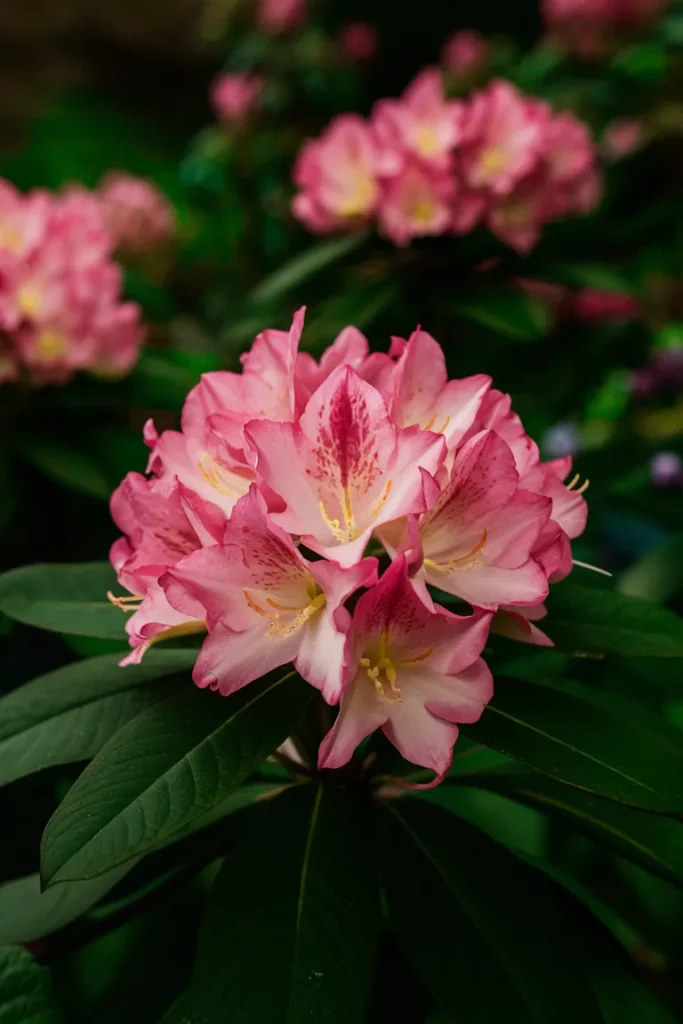
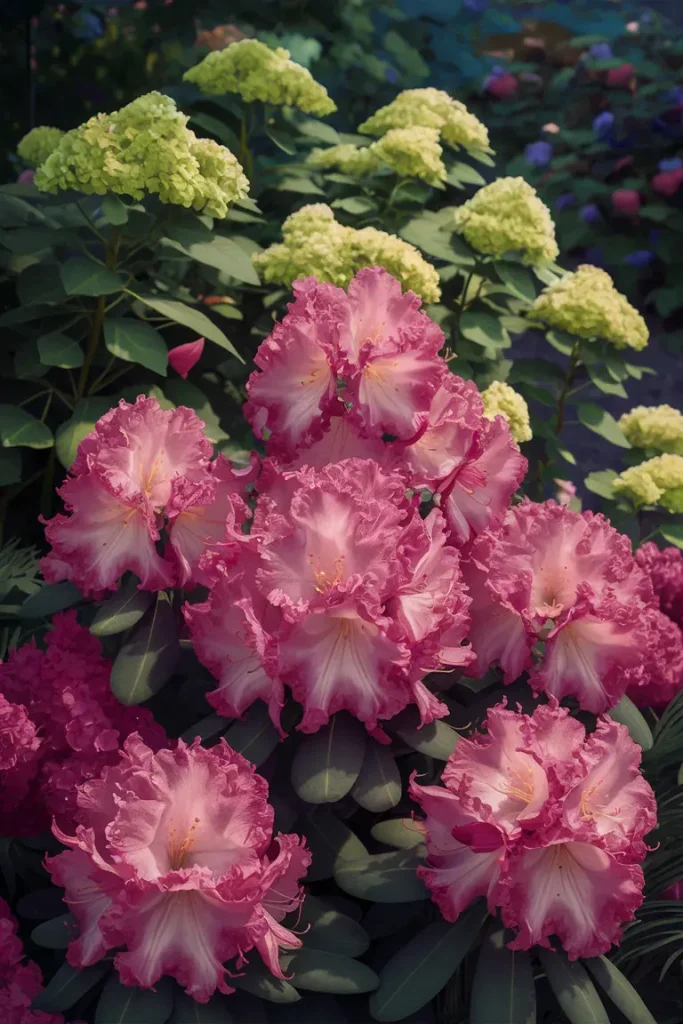
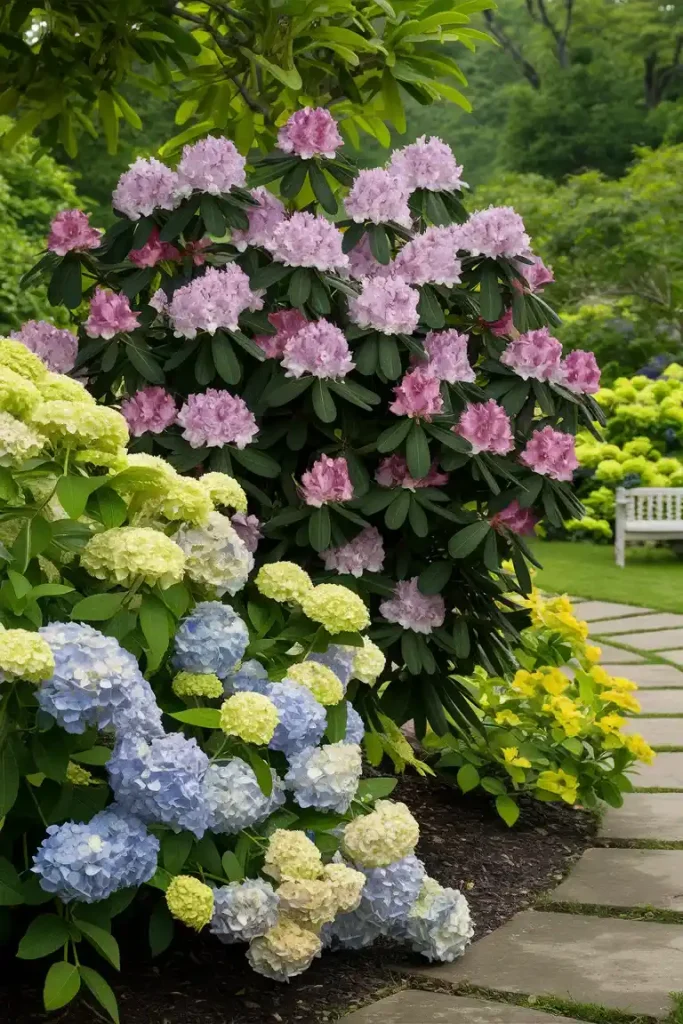
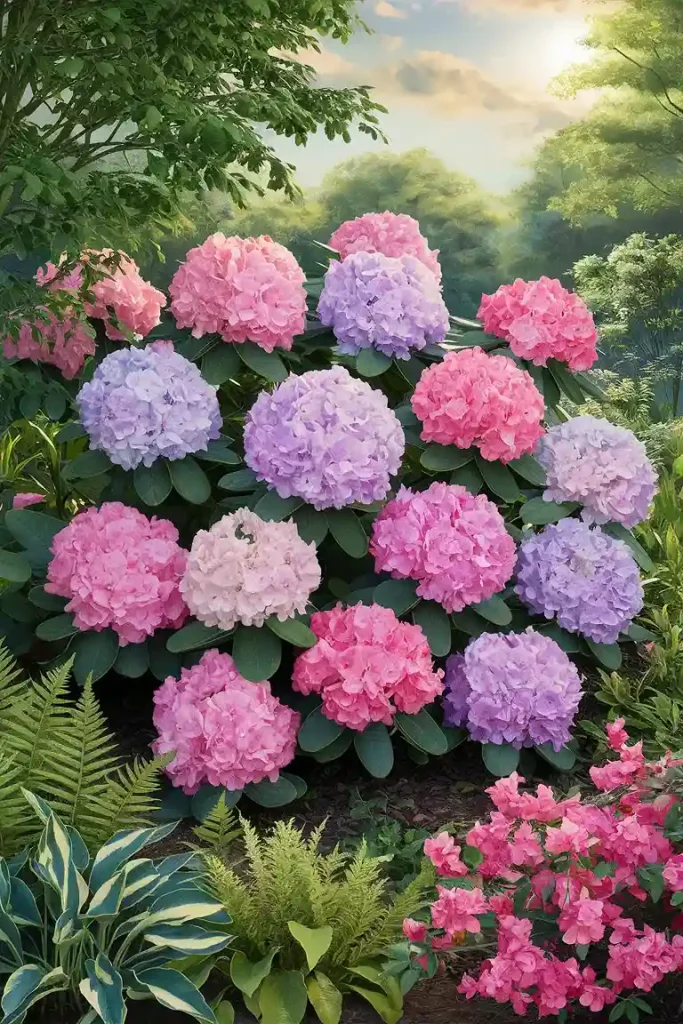
- Scientific Name: Rhododendron
- Plant Type: Both evergreen and deciduous shrubs
- Geographic Origin: China and Japan
- Height: 1-2 feet
- Sun Exposure: Partial sun to full shade
- Plant Zone: 3 to 9
Similar to azaleas, rhododendrons have large, showy flowers and evergreen foliage. They prefer shaded conditions and acidic soil, just like hydrangeas. Rhododendrons add structure and year-round interest to the garden.
14. Sweetspire
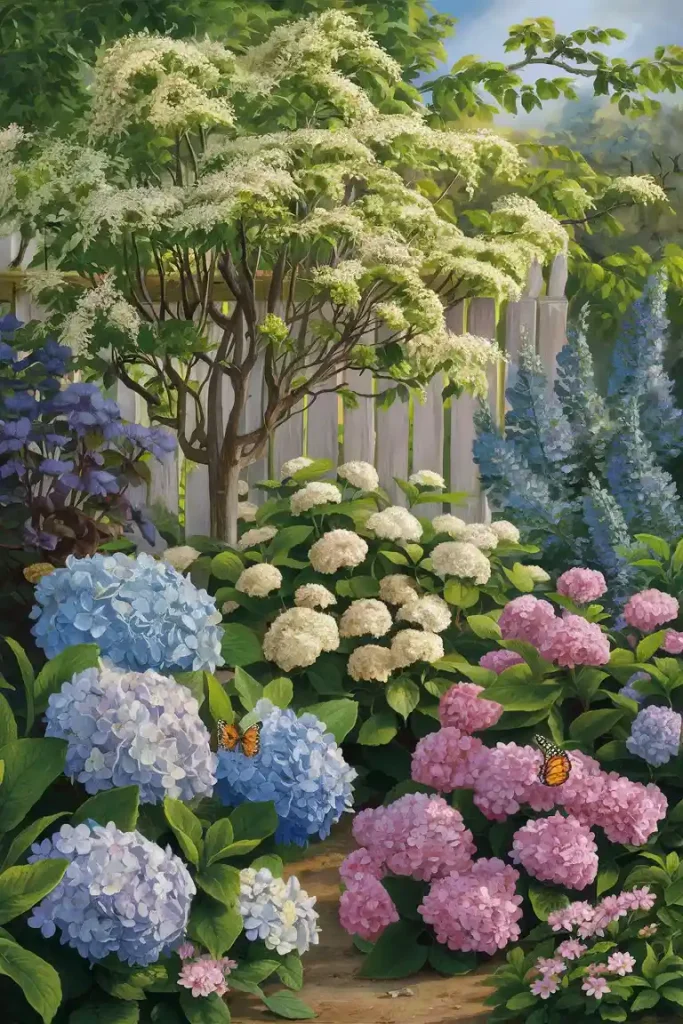
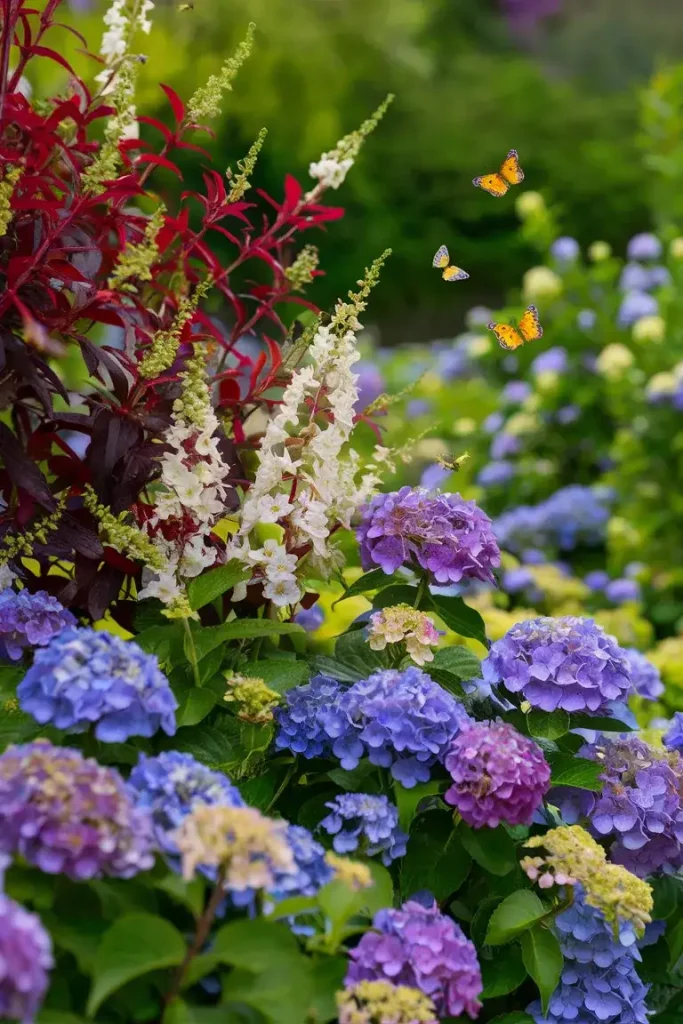
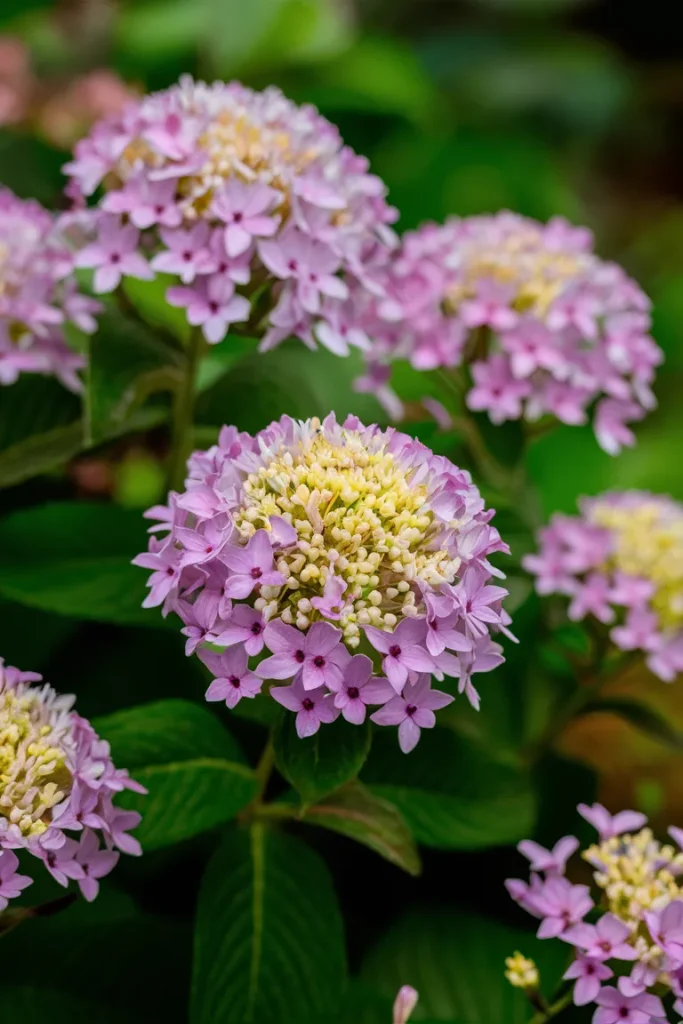
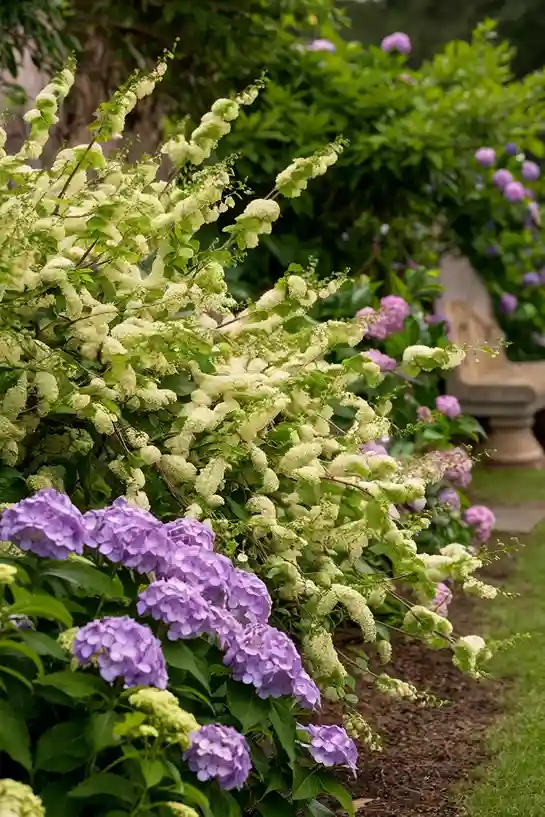
- Scientific Name: Itea
- Plant Type: Deciduous Shrub
- Geographic Origin: Eastern United States
- Height: 8 feet
- Sun Exposure: Full sun, partial sun, shade
- Plant Zone: 4 to 6
Sweetspire is a deciduous shrub with arching branches and fragrant, white flowers. It thrives in full sun to partial shade and well-draining soil. Its fall foliage in shades of red and orange adds seasonal interest.
15. Veronica (Spiked Speedwell)
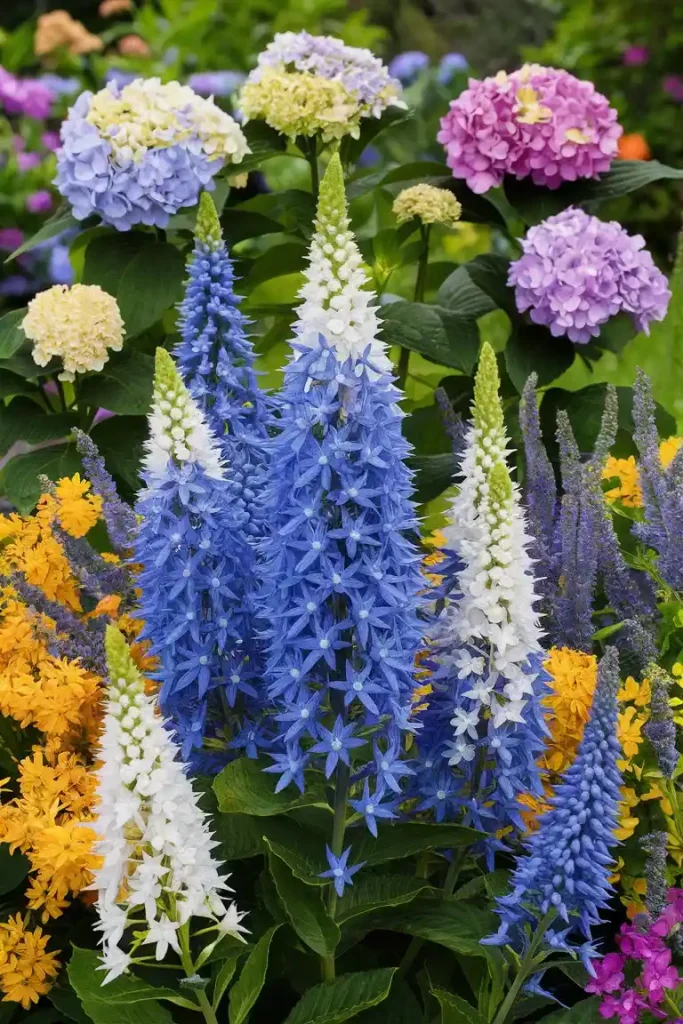
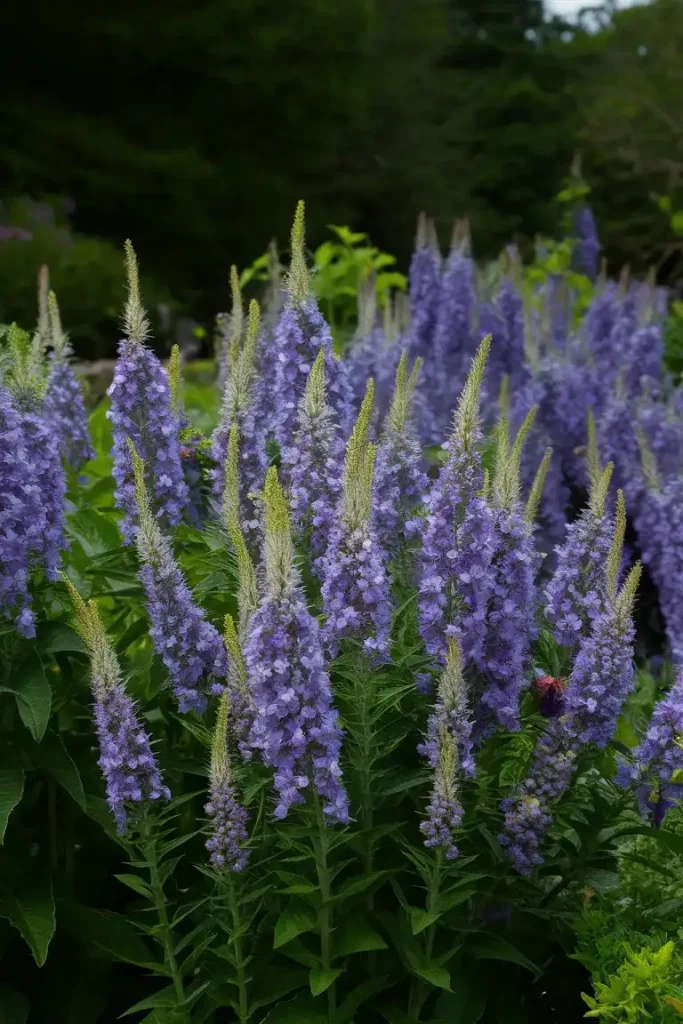
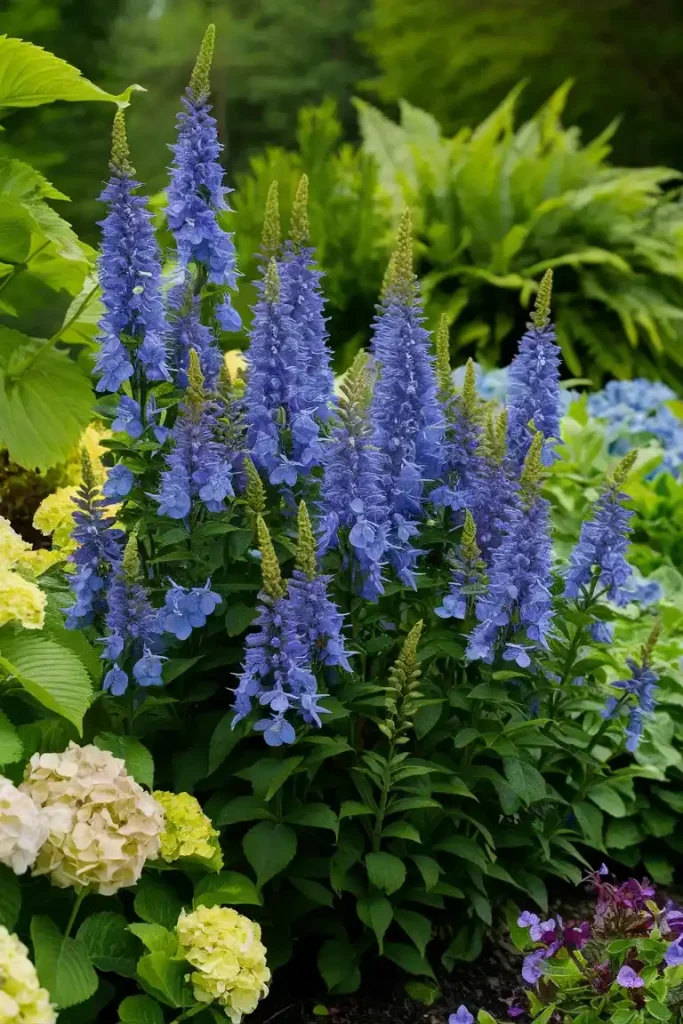
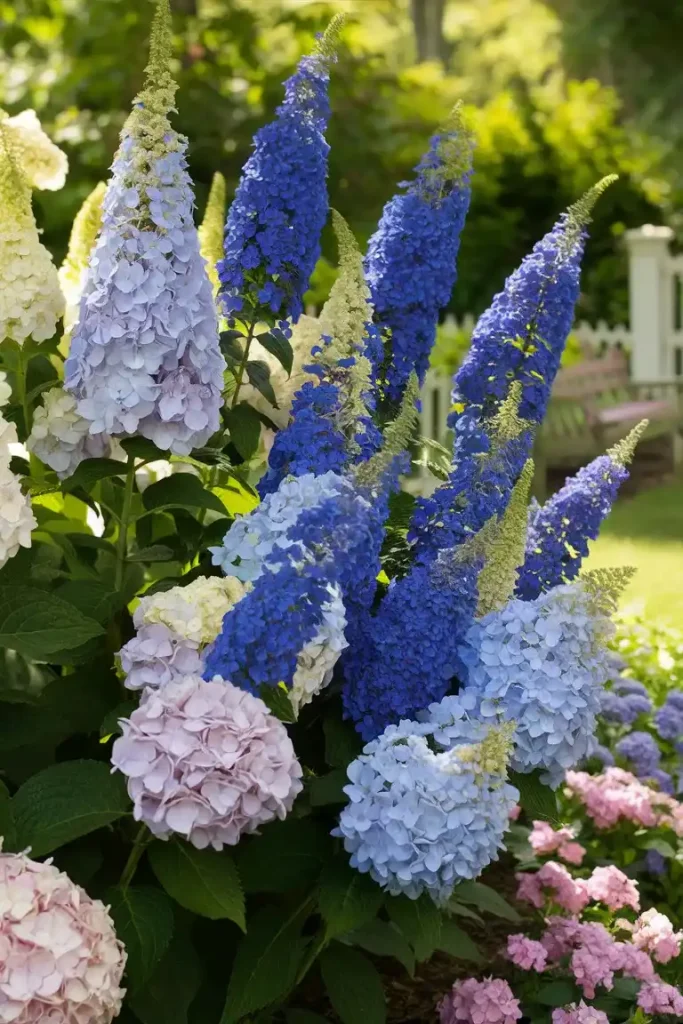
- Scientific Name: Veronica
- Plant Type: Perennial
- Geographic Origin: Europe
- Height: 18 to 24 inches
- Sun Exposure: Full sun
- Plant Zone: 3 to 9
Veronica is a low-growing perennial with spiked flowers in purple, pink, or white. It thrives in full sun and pairs well with hydrangeas in sunny spots. The spiky flowers provide a lovely contrast to the round hydrangea blooms.
Tips for Successful Companion Planting
- Match Growing Conditions: Ensure that companion plants have similar soil, sun, and water requirements as hydrangeas.
- Consider Bloom Times: Choose plants that bloom at different times to ensure continuous color in your garden.
- Layer Heights: Use a variety of plant heights to create a visually appealing, layered garden.
- Foliage Contrast: Select plants with different foliage textures and colors to add depth and interest.
- Space Appropriately: Follow spacing guidelines to allow each plant enough room to grow and thrive.
Final Thoughts
Companion planting with hydrangeas can transform your garden into a vibrant, diverse landscape. By carefully selecting plants that complement hydrangeas, you can create stunning combinations that provide continuous interest throughout the seasons. Whether you prefer bold foliage, colorful blooms, or aromatic plants, there are endless possibilities to explore. Happy gardening!

